Part of the TTC Family of Brands
GET A QUOTE
DESTINATIONS
WAYS TO TRAVEL
SPECIAL OFFERS
1 888 680 1241
Art & History Tours

REQUEST MORE INFORMATION

Art Lover's Tour of Europe - Italy, Switzerland, France, Netherlands
Grand history tour of europe - france, germany, czech republic, scientific marvels of europe - italy, switzerland, france, england.
Your search for ""
Day 1: Welcome to Rome
Welcome to Rome! On arrival you are met by your Travel Director and transferred to your accommodation. (D)
Day 2: Rome Sightseeing
This morning, visit the Vatican Museum with a Local Expert. Admire the papal art collection and enter the Sistine Chapel and admire Michelangelo’s masterpiece on its ceiling. Next door, in St Peter’s Basilica, see one of Michelangelo’s early works, the Pieta, and the splendid dome, completed after his death. Afterwards, visit the Colosseum, where the gladiators prepared for battle. (B, RD)
Day 3: Tuscan Hills onto Florence
Journey through the picturesque Tuscan Hills towards Florence. On arrival, join a local art historian to see Michelangelo’s David in the Accademia Museum. (B, D)
Day 4: Renaissance Florence
This morning, see the multi-coloured marble cathedral, bell tower and baptistery, adorned by Ghiberti’s ‘Gates of Paradise’. Then join a Local Expert for a visit to the Uffizi Galleries, one of the oldest and most famous art museums in Europe. You'll also enjoy works by Michelangelo, Botticelli and Raphael, among other masterpieces. (B, RD)
Day 5: Leaning Tower of Pisa & Milan
Stop first in Pisa to see the incredible Leaning Tower, as well as its splendid cathedral and baptistery. Continue north to the financial and fashion capital Milan. (B, D)
Day 6: Experience Milan
This morning, visit the Church of Santa Maria delle Grazie with a Local Expert. It is an outstanding work of architecture and an emblem within the Catholic tradition, and is perhaps even more famous for its connection to Leonardo Da Vinci’s fresco of ‘The Last Supper’, which is preserved inside its refectory (dining hall). The Church is one of Renaissance art’s most important testimonies and has therefore been included as a UNESCO World Heritage Site (tickets to the Last Supper are subject to availability). Later, for a change of pace, we embark on an alternative visit to Milan to see urban graffiti, murals and street art scattered around the city. Get a glimpse of an alternative Milan, meet colourful characters, learn about modern-day Milan and be inspired by the vibrancy of city life. (B, D)
Day 7: Milan to Basel
Travel across the border into Switzerland. En route, we stop for a cheese or chocolate tasting before heading to Basel. (B, D)
Day 8: Basel Sightseeing
Explore Basel, with a Local Expert, concluding with a visit to Foundation Beyeler In 1997, the famous collection of Ernst and Hildy Beyeler in Riehen. The collection contains around 200 pictures and sculptures, including works by Cézanne, Picasso, Rousseau, Mondrian, Klee, Ernst, Matisse and Newman. Famous around the world, the astounding temporary exhibitions are highlights of your visit. (B, D)
Day 9: Basel to Paris
Travel through the French countryside to Paris. (B, D)
Day 10: Best of Paris
After an orientation tour, visit one of the world's best-known art collections at the Louvre Museum. A specialist art historian guides you through the galleries to see the Venus de Milo, Winged Victory, Mona Lisa and more (Louvre visit subject to availability). Continue on a visit to the Notre Dame Cathedral, famously protected by its roof-top gargoyles, to learn about over-arching Parisian history. This evening, embark on an illuminations journey in Paris to see iconic sights at night. (B, HD)
Day 11: Musee De L’orangerie & Giverney
This morning, visit the Musée de l'Orangerie, an art gallery of impressionist and post-impressionist paintings. Though most famous for being the permanent home of eight Water Lilies murals by Claude Monet, the museum also contains works by Paul Cézanne, Henri Matisse, Amedeo Modigliani, Pablo Picasso, Pierre-Auguste Renoir, Henri Rousseau, Alfred Sisley, Chaim Soutine, and Maurice Utrillo, among others. Afterwards, we head to Monet’s garden in Giverney to see the inspiration of some of his most famous works before heading back to Paris. (BB, D)
Day 12: Paris to Amsterdam
Travel through northern France and Belgium en route to Amsterdam. (BB, D)
Day 13: Amsterdam Galleries – Rijksmuseum & Vincent van Gogh Museum
Admire world-famous masterpieces in the Rijksmuseum, which has on display 8,000 objects of art and history. There is a total collection of 1 million objects, spanning the years 1200–2000AD, among which are masterpieces by Rembrandt, Frans Hals, and Johannes Vermeer. Then onto the Vincent van Gogh Museum, which is dedicated to the works of Vincent van Gogh and his contemporaries in Amsterdam. The museum is home to the largest collection of Vincent van Gogh's paintings and drawings in the world. This evening, enjoy a canal cruise dinner to bid farewell to our time in Europe. (B, FD)
Day 14: Farewell Amsterdam
Your tour concludes after breakfast with a transfer to the airport for your onward flight. (B)
Day 1: Welcome to Paris
Welcome to Paris! On arrival at Charles De Gaulle airport you will be met by your Travel Director and transferred to your hotel.
Day 2: Paris From a History Perspective
Learn about the significance of the French Revolution and visit key sites such as Place de la Bastille, Les Invalides War Museum, the Conciergerie and Place de la Concorde. In the evening enjoy a walk along the Champs-Elysees, followed by a cruise along the River Seine. (BB)
Day 3: Disneyland in Paris
Spend the day at Disneyland Paris. Included in your tour is a full-day, one-park pass to either Disneyland Park or Disney Studio Park. (BB)
Day 4: Versailles & D-Day Memorial
Travel this morning to Versailles and visit the Palace of Versailles to see its opulent rooms and gardens. Experience the extraordinary Hall of Mirrors where the historic Treaty of Versailles was signed, ending World War I. Continue to Arromanches and visit the D-Day Memorial. It’s then onto Bayeux for our overnight stay. (BB, D)
Day 5: Battle of the Somme
Today we visit Amiens and the nearby Somme Battlefields, where some of the most intense fighting took place during World War I. More than 3 million men fought in this battle with1 million wounded or killed. We visit some of the many interesting memorials and museums dedicated to the fallen. Our overnight stay is in Amiens. (BB, D)
Day 6: The Lost Territories - Strasbourg
We travel to Verdum where you will visit the Verdum Battlefields and War Memorial. Our journey continues to Strasbourg, on the border of Germany, for our overnight stay. (BB)
Day 7: Strasbourg to Colmar
In the morning travel to Colmar where you will enjoy a boat tour in the canal quarter, followed by a walking tour around Petite Venise and the historic centre. From Colmar, continue to Riquewihr for a walking tour in the town. We then visit Chateau du Haut-Koenigsbourg for a visit to the castle, before arriving back in Strasbourg for our overnight stay. (BB)
Day 8: Europa Park & Friedrichshafen
Spend the day at the Europa Park, one of the best theme parks in Europe. This evening we overnight in Friedrichshafen. (BB, D)
Day 9: Meersburg Castle onto Munich
Begin your morning with a walk up to Meersburg Castle. We then make our way to the well-known Neuschwanstein for a tour to the castle and a horse-carriage ride down the mountain. Then it’s onto Munich where a Local Expert will take you on a walking tour in the city centre, including key sites related to Hitler’s time in Munich and the Third Reich. Finally we visit the Nazi Documentation Centre. (BB)
Day 10: Eagle’s Nest & Obersalzburg
A short drive out of Munich, visit Hitler’s former retreat, known as the Eagle’s Nest. Afterwards, stop for lunch at Obersalzburg (own expense) and continue to the Konigsee for a boat tour on the Lake and a chance to swim in Lake Chiemsee. Return to Munich for your overnight stay. (BB)
Day 11: Dachau & Rothenburg
We start the day with a tour to the Munich Residenz Museum. It is then onto Dachau for a sobering visit to the concentration camp. Our overnight stay is in Rothenburg ob der Tauber. (BB)
Day 12: Explore Medieval Rothenburg
Rothenburg was regarded by the Nazis as the most “German” of German towns. Visit the Museum of Torture, explore the medieval city and battlements, and join a Nightwatchman tour. (BB)
Day 13: Nazi History in Nuremberg
We depart Rothenburg and continue to Nuremburg in the morning. On arrival, join a Local Expert for a tour to city centre. Walk up to the Kaiserburg Castle, visit the Nazi parade grounds and the Albert Speer Documentation Centre to bring to life the history of Hitler’s rise to power. In the afternoon, visit the Palace of Justice and Courtroom 600, the location of the Nuremburg Nazi trials. (BB)
Day 14: Onto Magical Prague
This morning travel to Prague, the capital of the Czech Republic. On arrival, join your Travel Director for an orientation tour of the old town centre, including the town square, St Nicholas Church and Tyn Church. Afterwards visit Prague Castle and walk to Charles Bridge. (BB)
Day 15: Museum visits in Prague
Visit The Prague Communism Museum, Jewish Museum and the Kepler Museum today. (BB)
Day 16: Military History in Dresden
In the morning we travel to Dresden where we join a Local Expert for a tour of the Dresden’s Zwinger Palace, the Bundeswehr Military History Museum, the Dresden Armoury and Frauenkirche. (BB)
Day 17: Tropical Islands Water Park
Depart Dresden and spend the day at the Tropical Islands Water theme park. (BB)
Day 18: Berlin Sightseeing
Tour to Berlin starts with a visit to the ‘Story of Berlin’ Museum to provide an overview of the city’s tumultuous history. Your journey with a Local Expert includes the Brandenburg Gate, the Reichstag, Checkpoint Charlie, sections of the Berlin Wall and Alexanderplatz. Visit also the Zeppelin Field and the Jewish Museum, the German Resistance Memorial Centre and the Holocaust Memorial. (BB)
Day 19: Farewell Berlin
On our final morning we visit the Wansee Haus Museum and Documentation Centre of the “Final Solution”. Later, explore the DDR Museum to learn about life under communist rule after the end of World War II. We bid farewell to Berlin and make our way to the airport for flights home. (BB)
Day 1: Welcome to Florence
Welcome to Italy! On arrival at Bologna airport, you will be met by your Travel Director and driver. We continue to our hotel in Florence where you’ll have time to settle in, before enjoying a welcome dinner at the hotel. (WD)
Day 2: Discover Florence
After a restful night’s sleep and breakfast at the hotel, we visit the Basilica di Santa Croce and Museo Galileo, home to the only surviving instruments designed and built by Galileo himself. The remainder of the day is free for you to explore Florence. (BB)
Day 3: Florence at your Leisure
Enjoy a day at leisure. Explore captivating Florence at your own pace or join your Travel Director for a day tour to Vallombrosa to see the Monastery where Galileo studied. (Guided tours only available in July & August). (BB)
Day 4: Bologna to Padua
After breakfast at your hotel, spend the morning at leisure. In the afternoon, we drive through Bologna to Padua where you’ll enjoy a local 3-course dinner alongside a guest lecturer from the Padua University. (Lecturer organised by MTG.) (BB, HD)
Day 5: Padua to Venice
Today we visit the Il Bo University, the second oldest university in Italy, for a guided tour. The afternoon is free for you to visit the Botanical gardens and St Anthony Basilica. Later in the afternoon, we continue to our hotel, situated in Mestre Venice, where we will stay for 2 nights. (BB)
Day 6: Romantic Venice at your Leisure
After breakfast, the rest of the day is yours to explore romantic Venice at leisure. (BB)
Day 7: Onto Swiss Geneva
Les Nations Hotel After a restful night’s sleep, we cross the border to Switzerland. On arrival into Geneva enjoy a late afternoon cruise on Lake Geneva. Afterwards we check into our hotel. (BB)
Day 8: Nuclear Science in Cern & Geneva Exploration
After breakfast we travel to CERN (subject to availability) to visit the European Organisation for Nuclear Research and see the Large Hadron Collider, the world’s largest and most powerful particle accelerator. The remainder of the day is free to explore the city of Geneva. (BB)
Day 9: Geneva to Paris
Enjoy a delightful drive through the French countryside, as we make our way to Paris. On arrival you are free to relax or explore the city of love on your own. Gather for dinner at the hotel, during which you’ll enjoy the company of a guest speaker from the Marie Curie Museum. (Lecturer organised by MTG.) (BB, D)
Day 10: Gardens of Paris
Visit the Botanical Gardens in the morning. Here you will discover the Alpine Gardens, which contain 2000 mountain plants from all over the world. Wander through the rose garden, the iris garden and the Botany School's Garden, where 4500 species are labelled and regrouped by families. (BB)
Day 11: Arts & Metier Museum in Paris
Take time to visit the Arts and Metier Museum and spend the rest of the day at leisure to explore the wonderful city of Paris. (BB)
Day 12: Science in Paris
After breakfast in the morning, visit the Marie Curie Museum. Completely re-designed, the Museum reveals the life and times of a family of unusual physicists and their huge contribution to science. The rest of the day is at leisure. (BB)
Day 13: Paris at your Leisure
Enjoy a day at leisure to explore the city of Paris. (BB)
Day 14: Eurostar to London
Bid farewell to Paris today, as we travel by Eurostar to London. On arrival we will be met and transferred to a local pub for lunch. We’ll then check into our hotel and you’ll have the rest of the day to enjoy at leisure. (BB, L)
Day 15: Day Tour to Kent
Today we travel to Kent to visit the Down House, the home of Charles Darwin, before returning to our London hotel. (BB)
Day 16: Scientific Marvels of London
Enjoy a full day of sightseeing, including a visit to the Royal Observatory, Flamsteed, Meridian Courtyard and Maritime Museum, and a cruise on the River Thames. The remainder of the day is at leisure. (BB)
Day 17: Royal Society & Faraday Museum in London
This morning we visit the Royal Society followed by a visit to the Faraday Museum at the Royal Institution. Lunch is served at a local restaurant. (BB, L)
Day 18: Westminster & Science Museum in London
We spend the morning visiting Westminster Abbey and the afternoon exploring the Science Museum in Kensington. (BB)
Day 19: Discover Cambridge
After breakfast, we continue to the university town of Cambridge for a 2-night stop. Enjoy a private walking exploration of the town including a visit to Trinity College – the largest of the Cambridge Colleges. (BB)
Day 20: Cambridge at your Leisure
Today is yours to explore at leisure. We meet again in the evening to celebrate the end of our tour with a farewell dinner at our hotel. (BB, D)
Day 21: Farewell from London
Our science tour has come to an end. Transfer from Cambridge to the London Heathrow Airport for your flight home. (BB)
ALL THE SIGHTS AND THE INSIGHTS, UP CLOSE AND PERSONAL, IN COMFORT AND IN STYLE
EXPLORE WITH INSIGHT
UK and Ireland
USA and Canada
Latin America
North Africa
TOUR STYLES
Discovery Journeys
Regional Journeys
Country Roads
Domestic Escapes
Special Interest Tours
Get A Quote
Request A Brochure
Travel Insurance
The Insightful Blog
Privacy Policy
Booking Conditions
Tour Deposit Level
Travel Updates
My Personal Information
Do Not Sell or Share My Personal Information
Selected Region
United States
United Kingdom
New Zealand
South Africa
© Insight Vacations 2024. All Rights Reserved.
Cookie Policy
Visiting Sleeping Beauties: Reawakening Fashion? You must join the virtual exhibition queue when you arrive. If capacity has been reached for the day, the queue will close early.

Plan Your Visit
- Read our visitor guidelines
- Admissions policy (10 languages)
Gallery Closures
The Ancient Near Eastern and Cypriot Art galleries and The Michael C. Rockefeller Wing are closed for renovation.
See a list of currently closed galleries .
Suggested Admission
New York State residents and New York, New Jersey, and Connecticut students: the amount you pay for admission is up to you, but you must pay something ($00.01 minimum per ticket).
To buy pay-what-you-wish tickets online, you must have a New York State billing address. New Jersey and Connecticut students can only buy pay-what-you-wish tickets in person with valid student ID. Accepted forms of residency verification include New York State driver’s license, New York State identification card, IDNYC, current bill or statement with a New York State address, student ID, and New York library card.
General Admission
Buy tickets Become a member
Complimentary admission eligibility and passes
Locations and Hours
The Met Fifth Avenue
The Met Cloisters
Review our visitor guidelines to get the most out of your Met experience.
Plan your route to the Museum.
Use The Met's interactive map to get around the Museum.
We welcome all visitors and affirm our commitment to offering programs and services that are accessible to everyone.
Where to eat and drink when you visit.
Enjoy free admission, complimentary guest tickets, invitations to exclusive viewing hours, discounts, and more.
Now On View
The Harlem Renaissance and Transatlantic Modernism
Sleeping Beauties: Reawakening Fashion
The Roof Garden Commission: Petrit Halilaj, Abetare
Hidden Faces: Covered Portraits of the Renaissance
Indian Skies: The Howard Hodgkin Collection of Indian Court Painting
Weaving Abstraction in Ancient and Modern Art
Lineages: Korean Art at The Met
The African Origin of Civilization
Cycladic Art
Look Again: European Paintings 1300–1800
Before Yesterday We Could Fly: An Afrofuturist Period Room
The Art of the Literary Poster: Works from the Leonard A. Lauder Collection
Vision and Verse: The Poetry of Chinese Painting
Anxiety and Hope in Japanese Art
The Real Thing: Unpackaging Product Photography
Don't Forget to Call Your Mother
Art of Native America: The Charles and Valerie Diker Collection
Bélizaire and the Frey Children
The Calculated Curve: Eighteenth-Century American Furniture
Emulating Books: Book Objects from the Lynn and Bruce Heckman Gift
New York Art Worlds, 1870–1890
Samurai Splendor: Sword Fittings from Edo Japan
Ganesha: Lord of New Beginnings
A Passion for Jade: The Bishop Collection
Embracing Color: Enamel in Chinese Decorative Arts, 1300–1900
Afterlives: Contemporary Art in the Byzantine Crypt
The Jousting Armor of Philip I of Castile
Layered Narratives: The Northern Renaissance Gallery
Renaissance Masterpieces of Judaica: The Mishneh Torah and The Rothschild Mahzor
Celebrating the Year of the Dragon
More ways to explore.
Audio Guide
Stream Audio Guide content for thousands of artworks in the galleries and for select current exhibitions.
The Met Fifth Avenue Digital Guide
Enhance your visit using our new digital guide, available for free on the Bloomberg Connects app.
An Hour at The Met
Explore some of The Met’s collection highlights in this one hour tour.

Art & culture tours
Whether you’re learning about glassblowing in Venice or sipping mint tea on the ground of a Bedouin tent, you’re bound to have a life-changing experience with us.
Each of our tours will help you uncover the art and culture of a destination, but if you’re looking for a more in-depth experience, check out the tours below.

4.7 out of 5 stars

4.8 out of 5 stars

4.6 out of 5 stars

4.5 out of 5 stars

Get paired with your perfect tour
Answer six questions and we’ll narrow down our 175+ tours to just a few that are made for you.
Already booked? Add excursions!
Add handpicked experiences to dive deeper into culture, and stay longer on the tour extension.
Combine your Club Go credits
If you have an account, you’re part of Club Go—and you earn rewards after every trip.
Group travel made easy
We offer 200+ immersive, guided tours around the world. Wherever you choose to go, you’ll enjoy lots of advantages that make traveling with us different.
That’s all it takes to secure a spot on one of our group tours when you sign up for AutoPay . Plus, you can pay in interest-free, monthly installments.
While you’re deciding what to take, we’ll be busy arranging your hotels, meals, tickets, and more tour essentials. That’s what going guided is all about .
Take off on your big adventure— but why stop there? Every trip you book with us earns rewards that you can use to keep expanding your horizons.
Not sure which tour is right for you? We're here to help.
Chat online.
Chat instantly with us during our normal hours, or leave a message and we’ll get back to you ASAP.
Schedule a call
Let us know your preferred time to chat and a travel expert will reach out.
Schedule now
We’re available every day from our offices in Boston and Denver at 1-855-590-1161
What our travelers say about their art & culture tours
Faqs about our art and culture tours.
Great art comes from all over the globe, but here are a few hot spots we'd recommend:
- Italy for the birthplace of the Renaissance
- Paris for some of the richest art collections in the world
- Rome for sculptures of all kinds
- Morocco for artisan markets and performances
Whether you're into painting, sculptures, theatre, music, architecture, or nature, you'll see it up close—in museums, parks, performance halls, and even city bus tours. View any of our trips for the full itineraries.
Italy is home to some of the greatest artists in history—and not just Michelangelo and Leonardo Da Vinci. Italy has incredible glass-blowers, playwrights, and crafters. It also has some of the most notable sites from famous works of art, like Shakespeare’s fair Verona, the Amalfi coast, and the Sicilian backdrops for Francis Ford Coppola’s iconic movie The Godfather. Check out our The Art-Lovers Guide to Italy .
When you travel with us, you get a full educational and cultural experience with knowledgeable guides, free time to explore, and all the benefits of traditional group travel, too. Learn more about the Go Ahead Tours difference .
More types of travel
See the latest from our travelers @goaheadtours.

- +447915608593
- [email protected]

8-Day Art History Tour From Praxiteles to Caravaggio (Rome, Naples, Assisi, Florence)
Proceed booking, already a member, don't have an account create one., or continue as guest, adding item to wishlist requires an account, why book with us.
- Small group tour, max 12 persons
- in-depth knowledge of the territory
- Expert archaeologists
- Expert art historians
- Top restaurants
At Italian Adventures, we offer an extensive range exceptional tour experiences from archaeological tours of italy to Italian art tours. We are pleased to present to you our art history tour of Italy “From Praxiteles to Caravaggio”. Our team has carefully thought up this tour to take you, accompanied by one of our art historians, to the most beautiful places and museums to admire a vast selection of all kinds of art in Rome, Naples, Assisi, Monterchi, Sansepolcro, and in Florence.
During this fabulous art tour of Rome and significant towns and cities, we will take you to and explain Greek and Roman art sculptures mosaics and frescos, Proto-Renaissance art, and various expressions of Renaissance art up to Mannerism and Baroque art. We will bring you not only to see the famous frescoes, paintings and sculptures which have been gathered in famous big museums, but also to locations away from the big cities in central Italy where interesting and famous art can be admired.
There will also be a field day where we will instruct you, aided by a local expert, to make your own small fresco with natural colours as it was done by the Roman anonymous “pictors” or by Giotto, Michelangelo, and other artists. Afterwards, you can take your fresco work with you.
We will also take care of the eno-gastronomic aspect during your stay as we will lunch and dine in carefully selected restaurants and trattorias. Our company has a 10-year of experience as an online dining guide for high-level restaurants in Rome and Italy. Depending on the season we will make sure to let you taste typical Italian or local delicacies throughout this curated art history tour of Italy
Meet your tour guide
Your tour guide : Dr. Flaminia Franco
Flaminia, as a true Roman, embodies the rich history and cultural legacy of her captivating city. Her name, derived from the title of “Flamen,” echoes the role of priests in the ancient Roman religion. Armed with a passion for art history, Flaminia pursued academic excellence, earning a distinguished degree in art history. complemented by a transformative 3-month internship at the esteemed Museum of Fine Arts in Boston.
Since 2012, Flaminia has blended her profound knowledge and genuine enthusiasm as a licensed tour guide, specializing in the treasures of Rome and the Vatican. Her tours are immersive journeys through time, art, and culture, curated by a guide who wears her Roman heritage with pride.
Embark on an adventure with Flaminia, where her love for art, coupled with a deep connection to her Roman roots, transforms every tour into an unforgettable exploration of culture, heritage, and the timeless allure of the Eternal City.

Start & end Location
Rome International airport Leonardo da Vinci
Upon your arrival in Rome
You will picked up by us at the airport
Tour duration
8 days – 7 nights
Physical difficulty
Easy, short walks
Price Includes
- 7 Nights of 4-star hotel accommodation
- All dinners and lunches
- An art historian as your tour guide
- All entrance fees
- All transportation during the tour
Upon your arrival at Rome’s Leonardo da Vinci airport or at the Termini train station, our staff will be waiting for you to bring you to the hotel. After checking in, we will welcome you to Rome and explain to you some ins and outs about the hotel, the area of Rome where the hotel is located and some other things regarding logistics and safety in Rome and in Italy. It will also be a moment to meet our guides and the other persons on this tour. Further, we will explain to you how your week with us will evolve. After this short welcome we are off to see byzantine mosaics and have an aperitif in front of the Pantheon. Dinner is planned in a nearby restaurant that has a very interesting wine cellar with ruins that date back to the time of Marcus Agrippa.
After a good rest and a good breakfast, transport will be ready outside the hotel to take us to the old Appian Road where our tour of today starts. Our first stop will be at a small private Roman catacomb with interesting frescos to continue with a visit to the Catacombs of Saint Sebastian where we can admire Roman Pagan art, early Christian art, and surprisingly also baroque art. After these visits we will have lunch on the old Appian Road and sometime to relax. After relaxation, we will move to a place where our Roman Pictor will be ready for you to give hands on lessons in making Roman Frescoes. Each one of you can select a subject to paint from available examples and will be assisted to prepare and finish your personal fresco that you can take with you afterwards. In the late afternoon, we will take you back to the hotel for relaxations. Dinner will be in the vicinity of the Hotel.

After breakfast we will travel by minivan or minibus to Naples. Once we arrive in Naples, we will head for the centre to visit the Capella Sansevero with its amazing sculptures where we can admire il Cristo Velato by Giuseppe Sanmartino and Il Disinganno by Francesco Queirolo and other sculptures. From there we will go to the Galleria Umberto I to have a short walk towards piazza del Plebiscito to arrive at the seaside restaurant where we will have lunch. After lunch we will make an extensive visit to the Archaeological Museum of Naples or as, it was formerly called, the Real Museo Borbonico since it was Carlo VII, the Bourbon King of Naples who in 1748 took an interest in Pompeii and had excavations started which initially produced the Villa of the Papyri in Herculaneum and many artefacts. At the museum we will see Roman and Greek art and other interesting finds from Pompei and if you wish, you can also visit the secret cabinet ( Gabinetto Segreto ) which holds the collection of erotic art in Pompeii and Herculaneum. After the museum we will return to Rome, dinner will be close to our hotel.

In the morning we will visit the Vatican Museum with its amazing omnipresent art on ceilings, walls and displayed masterpieces. We will view the archaeological collection to admire Greek & Roman art and the sections with paintings and frescos from Giotto, Raffaello, Michelangelo, Leonardo da Vinci, Caravaggio and many others. After the museum we will visit the Sistine Chapel and Saint Peters Basilica. After Saint Peters we will leave the Vatican to have lunch near Piazza Navona. After lunch we will visit Villa Borghese to see more art from Gian Lorenzo Bernini, Agnolo Bronzino, Antonio Canova, Caravaggio, Raffaello, Perugino, Lorenzo Lotto, Antonello da Messina, Cranach, Annibale Carracci, Pieter Paul Rubens, Bellini and Tiziano. After a break and an aperitif, we will pay a short visit to the church of San Luigi dei Francesi to admire three masterpieces by Caravaggio; from there it is a very short walk to enter and appreciate the Pantheon with the tomb of Raffaello. Afterwards, our transport will take us to the hotel for some relaxation; dinner at the hotel.

Today we will check out of our hotel and travel north towards Umbria and Tuscany. Our first target is the town of Assisi where around the year 1200 Saint Francis founded his order and where he started the construction of his church, now the Basilica of Saint Francis. In the Basilica we will see works of Proto-Renaissance painters like Cimabue, Giotto and others. After our tour in the Basilica, we will visit the beautiful town of Assisi and have lunch. From Assisi we will travel to a small hamlet in Tuscany to make a meaningful stopover in our trip to Sansepolcro to admire one of the most enigmatic frescos of the renaissance: La Madonna del Parto by Piero Della Francesca. It is located in a small museum in Monterchi, birthplace of the mother of the artist. Once in Sansepolcro, there will be time to rest and relax. Dinner in a restaurant nearby our hotel.

Today’s visits will be in the sign of Piero della Francesca, first in Sansepolcro where Piero was born and later in the day in Arezzo to admire more works by him in the Basilica di San Francesco . There will be some time to see the city before commencing the visit at 10.00 hrs of the Museo Civico di Sansepolcro that houses frescos and paintings by Piero della Francesca. From Sansepolcro we will travel to Arezzo to have lunch at the main square of the town and subsequently visit the church of Santa Maria della Pieve and the Basilica di San Francesco where we will see the famous fresco La legenda della Vera Croce . After visiting we will resume our journey towards Florence. After checking in at the hotel there will be time to explore the city or to rest and relax. Dinner in the centre of Florence.

Today we will explore Florence on foot starting with a visit to the Uffizi Gallery which was commissioned in 1560 by Cosimo I de’ Medici , first Grand Duke of Tuscany to house the administrative and legal offices of Florence. His predecessor Francesco I de’ Medici 1574 to 1587, was responsible for creating the first art collection on the second floor of the building. The Gallery is famous for its outstanding collections of ancient sculptures and paintings (from the Middle Ages to the Modern period). The collections of paintings from the 14th-century and Renaissance period include some absolute masterpieces: Giotto, Simone Martini, Piero della Francesca, Beato Angelico, Filippo Lippi, Botticelli, Mantegna, Correggio, Leonardo, Raffaello, Michelangelo and Caravaggio, in addition to many precious works by European painters (mainly German, Dutch and Flemish). Moreover, the Gallery boasts an invaluable collection of ancient statues and busts from the Medici family, which adorns the corridors and consists of ancient Roman copies of lost Greek sculptures.
After the Uffizi Gallery we will have lunch followed by a visit to the basilica of Santa Maria Novella followed by a visit to the cathedral of Santa Maria del Fiore both interesting architectural works of art with interesting artworks by various artists. After these visits we will return to the hotel to rest or you can use this time before dinner to explore Florence on your own. Farewell dinner close to the hotel.

After breakfast, we will leave the hotel to return to Rome. On the way to Siena we will stop at the interesting town of Monteriggioni for a quick visit. From there we travel on to see Siena and have lunch. After lunch we will continue our trip back to Rome. Once there, we can leave you at any place you desire, airport, train station or, if you have decided to stay longer, at your new hotel.

Not sure if this tour is right for you?
Or do you have a question.
Call or send us a WhatsApp message and speak with one of our tour guides.
Frequently asked questions
- Airport transfers on first and last day of tour
- Minivan or minibus travel throughout the tour
- Accommodation in 4-star hotels in Rome, San Sepolcro and Florence
- A field day – create your own fresco
- All breakfasts, lunches, and dinners
- An expert art historian as guide
- All entrance fees and tips
All Breakfasts, Lunches and Dinners are included, further during a 10-year period our company worked with success as an online dining guide for medium high- and top-level restaurants in Rome and Italy. From our guide we have selected excellent restaurants we will visit to have lunch or dinner during our tour. Please inform us of any special dietary requirements at least 30 days in advance of your trip.
Your safety is our biggest concern. Our tours have been carefully selected to be pleasant and never dangerous. All our guides have been trained to live by the “Safety First” rule while guiding. On each hike there will be at least one guide who has had First-Aid training.
We do not provide Insurance. Adequate business travel insurance is a condition of your contract with us. You must be satisfied that your business travel or other appropriate insurance fully covers all your requirements including pre-existing medical conditions, cancellation charges, medical expenses and repatriation in the event of accident or illness. If you choose to travel without adequate insurance cover, we will not be liable for any losses howsoever arising, in respect of which insurance cover would otherwise have been available.
There will be a minimum of six to a maximum of twelve participants on each tour, plus our guides. On our tours you will meet people from various parts of the world and therefore with different backgrounds, most will be in the 40-75 age range. The persons that book our tours are curious and probably well-read who want to explore history, archaeology, and the delicious food of Italy.
Our guides are all English-speaking professionals with years of experience in guiding groups to and through the areas where we will be going, and they all love to share their knowledge and experience with you.
To see the sites and in the museums in all the cities (Rome, Naples, Assisi, San Sepolcro, Arezzo and Florence) we visit we will have to do short walks of maximum 5 km.
In Italy the shops are open until 19.30 / 20.00 hrs and often we will be at our hotel in Rome by 6 pm to give you some time to shop or to relax. When we return to our hotel by van, we can bring you to an area with shops or to a mall when they are not too far from our route.
We recommend a good pair of walking shoes, a small backpack and a hat or a cap for the sun and a rain jacket just in case. If you join us on a trip in spring or autumn pack raingear and a fleece to keep warm. We advise people who wear spectacles to bring a spare pair just in case.
Please click here , this link will open a page of the Italian Ministry of Foreign affairs where you can check if you require a visa.
This is explained in our booking conditions.
Italian Adventures can organise hikes or tours for private groups or companies of eight people or more. Please send an email to [email protected] or call us at 0039-392-0360775
Other tours that you might like

NEW – 8 Day Archaeo Hike The best of the Appia & Pompeii (From Rome to Benevento)

8-Day Archaeology Tour Rome, Wine, Dine and Pompeii (Rome, Naples, Tivoli & Etruria)

8-Day Archaeo Hiking Tour To Abandoned Roman Cities and Roman Baths
Italian adventures organizes tours to experience cultural immersion into Italy and its history by delivering high quality, fully organized, multi-day tours that will bring inspiring stories and adventures to tell at home.
Contact info
E-mail [email protected] Phone +447915608593 Address Crown House, 37 High Street East Grinstead, West Sussex RH19 3AF United Kingdom
COPYRIGHT © 2022 – ITALIAN ADVENTURES. Designed by JellePlevier.com

Khabarovsk, Russia
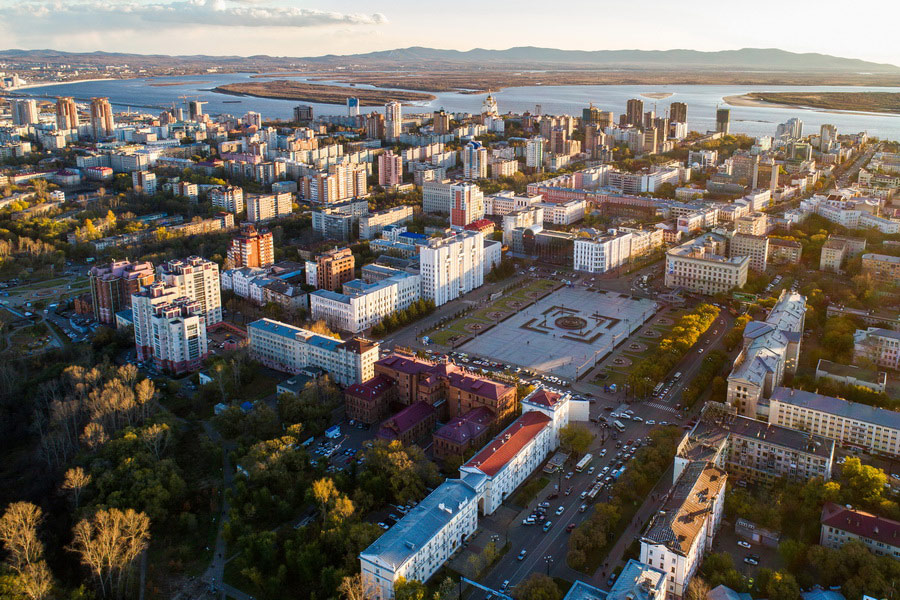
Tours, Attractions and Things To Do in Khabarovsk
Khabarovsk travel guide.
- 1. Architecture
- 2. Attractions
- 3. Cultural life
- 4. Souvenirs
Khabarovsk, Russia fascinates visitors with its unusual heritage and fabulous untouched nature. Tourists are drawn to the native culture, eclectic architecture and mesmerizing waters in this off-the-beaten-track destination, which promises a unique and memorable vacation.
As the center of Russia’s far eastern region of Khabarovsk Krai, the city offers celebrations throughout the year which are sure to give added flair to your trip, from traditional culture days to large-scale food fests. It is easy to keep a full itinerary during your stay thanks to its many theaters, museums, restaurants, workshops and quest rooms. Guests who want a more relaxed holiday can venture into the serenity of Khabarovsk nature, including the coast of the Sea of Japan or one of the region’s many picturesque lakes .
Khabarovsk Architecture
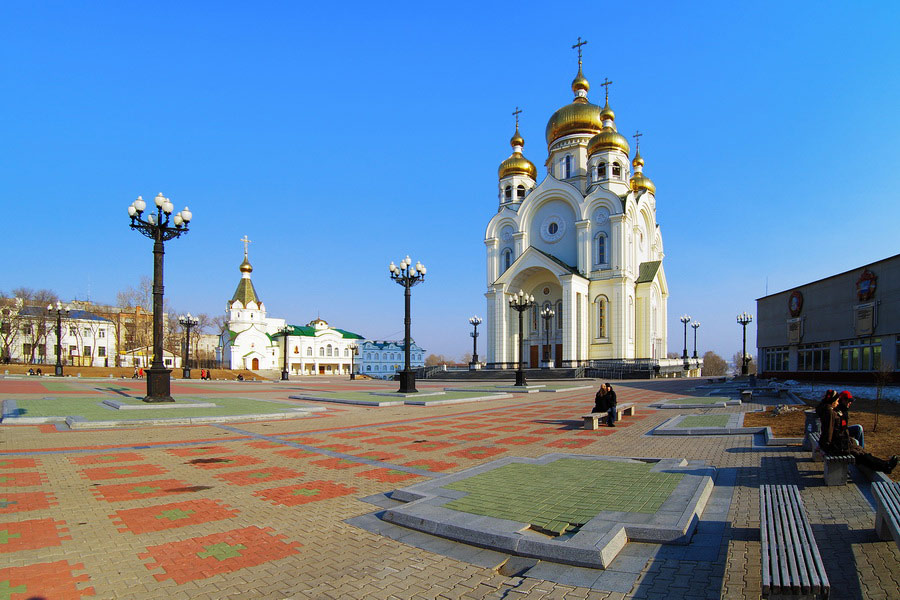
Khabarovsk architecture surprises with its harmonious blending of varying types and styles. This is due in large part to major changes which the city underwent in the mid-19th-early 20th centuries in conjunction with developments in the political, economic, scientific and technical spheres. The search for new trends in architecture came after the death of the classicism style, which had dominated the Russian Empire and the wider world for centuries. Beginning in the mid-19th century, the practice of mixing eclectic architectural styles began to emerge, leading to an era of amazing stylistic improvisations.
During the final decades of Romanov reign, many educational institutions for architects and engineers were opened. As a result, the face of numerous Russian cities began to change rapidly. Art Nouveau - a new, modern trend that absorbed several preceding styles – had come to dominate the architectural scene.
Many Art Nouveau buildings can still be seen in central Khabarovsk. These include:
- Takeuchi apartment building (5 Muravyov-Amursky Street)
- Esplanade Hotel (18 Muravyov-Amursky Street)
- Luhta apartment building (84 Komsomolskaya Street)
- Zandau apartment building (34 Muravyov-Amursky Street)
Khabarovsk also has many Gothic buildings, a style distinguished by its elegance and attention to detail. Every element of Gothic architecture emphasize a vertical orientation, as seen in the massive walls and columns, round arches and wide windows which contrast with narrow towers, pointed peaks and lancet windows.
Khabarovsk’s Gothic architecture is best represented by the artillery warehouse buildings located at 16 Komsomolskaya Street. Another notable example is the Red Guard Headquarters (105 Komsomolskaya Street), which has been preserved in its original form. The complex consists of two identical two-story brick buildings with unusual motifs containing pseudo-gothic elements.
Also of note is the early 20th-century Treasury Building, a luxurious red brick structure with openwork balconies that exudes an architectural grace.
Khabarovsk also has many Soviet-era buildings which were mostly designed in the constructivism style. Characterized by their enormous size and grotesque shapes, they often occupy most of the block and dominate the surrounding space.
During your Khabarovsk excursion, be sure to appreciate its unique architectural heritage by going for a walk downtown .
Khabarovsk Attractions
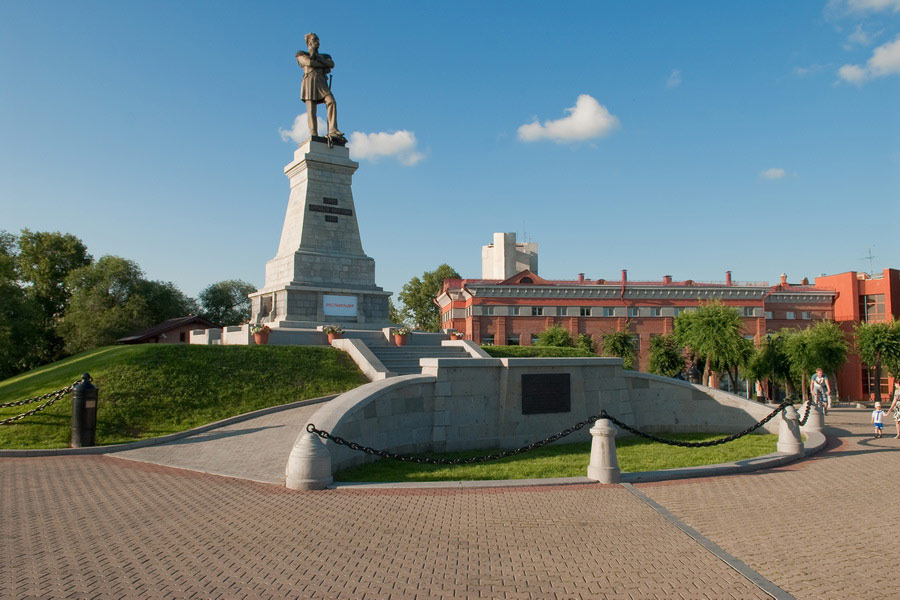
The layout of Khabarovsk is very simple: its 3 main streets of Lenin, Muravyov-Amursky and Seryshev pass through the downtown area, while Ussuriysky and Amur Boulevards run perpendicular to them. A distinctive feature of Khabarovsk are its many hills, so we recommend wearing comfortable shoes for your walk.
Begin your walking tour of Khabarovsk from the train station, where you can see the monument to Yerofey Khabarov, the famous explorer for whom the city is named. Nearby is a sculpture of a double-headed eagle, erected in memory of soldiers, officers and builders of the Far Eastern Railway. Moving from the station along Amur Boulevard you will reach the central market, just past which is Lenin Square. A spacious area with a granite fountain in the center, it is the main plaza of Khabarovsk and the site of the city’s Christmas and New Year celebrations. Next to the square is Dynamo Park, famous for its three ponds and Ferris wheel.
From Lenin Square, move along Muravyov-Amursky Street to reach Amur Embankment, passing most of Khabarovsk’s famous 19th-20th century buildings along the way. Descend to the embankment via two grand staircases or make a small detour onto Shevchenko Street, where you can follow the slope until you reach the embankment’s main stretch. Among other things, the area is home to the House of Officers and three museums.
As you move along the embankment through a park you will come across the city symbol of Khabarovsk, a building set on a steep cliff above the Amur River. It was at the foot of this cliff that the founders of a military post, the first semblance of civilization in the area, first landed.
After reaching the river and walking along Ussuriysky Boulevard to Turgenev Street, turn right to reach Glory Square. Here you will find another famous Khabarovsk landmark, Transfiguration Cathedral, along with a magnificent view of the Amur River and its dreamy islands. Glory Square concludes the main walking route of Khabarovsk, but from here you can reach any part of the city by public transport or taxi .

Khabarovsk Cultural Life
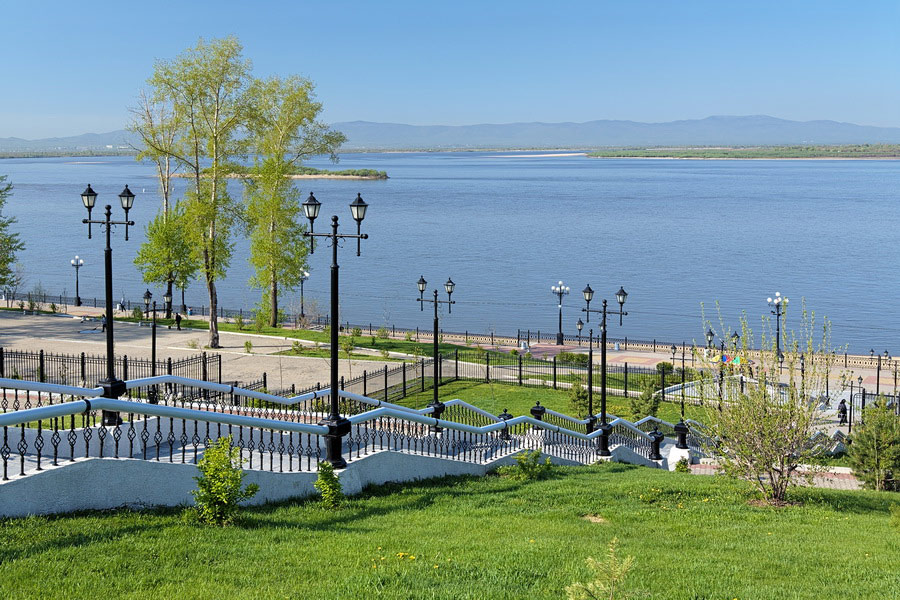
Khabarovsk entertainment centers around its many theaters and museums. Visit Khabarovsk Museum of Local Lore to get a better glimpse of city and regional life. Children and adults alike will want to visit Fishes of Amur River Museum, an aquarium which is home to some 90 species of the underwater world. To catch the vibe of local artists, head to the Far Eastern Art Museum.
There are several theaters in Khabarovsk, each of which is worth visiting:
- Khabarovsk Regional Puppet Theater;
- Triad Pantomime Theater;
- Khabarovsk Regional Philharmonic;
- White Theater, and others.
In addition, Khabarovsk offers several concert halls, culture houses, cinemas and art institutions .
Khabarovsk Souvenirs
While the city’s souvenir selection is not as diverse as in other Russian cities, guests can still find something suited to their tastes on their tour to Khabarovsk. Amur River and the Sea of Japan offer an abundance of seafood that can be tasted on the spot or brought home in dried or smoked form. Yet it is the rich culture of the local indigenous peoples which provides the largest selection of national souvenirs.
If you’re looking for an original gift, traditional Nanai slippers are comfortable and warm. Sewn from leather or fabric and decorated in a bright, colorful style before being trimmed with fur, they make the perfect house shoes in winter. Traditional decorations include amulets which are made from animal bones, fur or fabrics and decorated with ribbons and colored beads.
Standard souvenirs like plates, magnets, mugs and flasks stamped with images of Khabarovsk or its coat of arms can be purchased in souvenir shops, which are mostly located downtown and at the airport and railway station.
- Browse all FAQs
- Log In / Register
- My Library Dashboard
- My Borrowing
- Checked Out
- Borrowing History
- ILL Requests
- My Collections
- For Later Shelf
- Completed Shelf
- In Progress Shelf
- My Settings

Art & Architecture Tours at the Central Library
- Tours & Class Visits FAQ
All visitors are welcome to view the art and architecture , opens a new window inside our historic Central Library during open hours , opens a new window , and can use our building map and points of interest to plan their visit.
Free public tours are offered most days of the week on a first come, first served basis. View the schedule and tour info , opens a new window .
Groups larger than five must register with the Tours office one month before their planned visit.
School groups can contact us to plan your visit.
Our three public floors are all accessible by elevator . Contact us with any further questions about accessibility in our spaces.
If you have any questions, please reach out to the Tours Office at [email protected] , opens a new window or 617.859.2216 , opens a new window .
The landmark Central Library in Copley Square features notable architecture spanning three centuries, as well as treasured art and decorative installations within. A summary of key points of interest can be found on our Art & Architecture page .
Public Art & Architecture tours are free of charge and run at the following times:
Mondays at 2:00 pm Tuesdays at 2:00 pm Thursdays at 6:00 pm Fridays at 11:00 am Saturdays at 11:00 am
Tours last approximately one hour and start in the McKim Building Vestibule , just through the Dartmouth Street entrance. Tours are subject to guide availability.
Unauthorized guides are not permitted to lead tours within the library. When planning your visit, please make note of days when the library will be closed due to holidays ; inclement weather may also affect opening hours.
Interested in joining a public tour?
Public tours are currently limited to 25 people per tour guide, and we ask that individual parties larger than five people refrain from joining the public tours so as not to overcrowd the group.
We do not take reservations. To claim your spot on the tour, when you arrive at the library, head to the McKim Building Welcome Desk (which is right through the library entrance on Dartmouth Street). There, a staff member can give you and each member of your party a sticker to wear to signify you as a member of the tour group. Staff will start handing these stickers out an hour before the tour starts, and on a first-come, first-served basis.
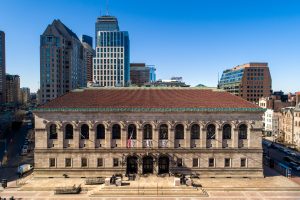
Private groups of any size up to 50 people may request an Art & Architecture tour outside of the regularly scheduled public tour times. Individual parties larger than 5 people are not permitted to join a public tour and must schedule a separate private tour, if they would like a guided tour of the library.
A minimum lead time of one month is required for private tour requests; bookings are subject to guide availability.
Each guide can accommodate up to 25 visitors ; a $200 fee per guide applies. An invoice will be sent via email to the billing addressee.
Tours last approximately one hour and begin from the McKim Building vestibule, just through the Dartmouth Street entrance.
To book a private Art & Architecture tour of the library, please contact the Tours Office at [email protected] or 617.859.2216 .
All student visits must be scheduled and receive approval ahead of time. Please contact the Tours office at [email protected] or 617.859.2216 at least a month in advance to inquire about booking a school visit/tour. For guided private tours, group sizes are limited to 25 people and are subject to tour guide availability. School group visits must provide one adult chaperone per 10 students.
Grades K-12 : We offer abridged versions of our Art & Architecture tour geared towards students, with a 30-minute version available for grades K-5 and options ranging from 20-45 minutes for grades 6-12.
College classes : College professors are welcome to lead their students on self-guided visits through the building. We allow classes of up to 25 people, but do not book any self-guided visits during our public tour times. Please reach out to the Tours office at [email protected] or 617.859.2216 at least a month in advance to receive approval for a self-guided visit.
For any groups that are interested in a visit to the Norman B. Leventhal Map & Education Center, please visit their website .
All visitors are welcome to visit the library and explore on their own any time during the library’s open hours ; you do not need to be on one of our public tours to visit. Groups of more than 5 people must register with the Tours Office at least one month ahead of your planned visit. Please contact [email protected] or 617.859.2216 to register.
Please note that non-BPL affiliated tour guides are not permitted to lead tours inside the library as it is in violation of the library’s Appropriate Use Policy .
The following materials provide much of the same information that is shared on our guided tours and may be useful for those visiting that are not able to join a guided tour:
- Art & Architecture Virtual Booklet (also available in print format at both entrances to the Central Library)
- Central Library Points of Interest
The Boston Public Library strives to make our resources accessible to all users through a variety of collections, services, and specialized equipment. The McKim Building has Art & Architecture points of interest across three public floors. Each floor is reachable by elevator if you are not able to use the stairs. If you have any questions about accessibility on our public Art & Architecture tours, please email [email protected] or call 617.859.2216 . For further information about accessibility at the Central Library, see our accessibility page .
For more information about the program requirements and the responsibilities of volunteer Art & Architecture tour guides, please refer to the position overview . While applications are reviewed and candidates contacted on a rolling basis, we are not always in a position to onboard new guides. Interested candidates should complete the application and return to [email protected] . Please contact [email protected] or call 617.859.2216 if you have an questions.
Powered by BiblioCommons.
BiblioWeb: webapp05 Version 4.19.0 Last updated 2024/05/07 09:46

How Our Tours Work
All of our tours are private, not public. So the tour is arranged just for you and yours.
- We recommend using our online booking tool for up-to-date availability.
- Select your tour experience and set your preferred date and time.
- Our booking system will help you select the right guide from our team of art historians based on the guides' availability.
- Tell us a bit about your interests and private group. We'll customize your tour from there.
- Your confirmation will show where the guide will meet you at the museum.
- Private tours for 1 - 4 people in your group booked online* are $225 per hour (a $5 discount over tours booked via email or phone).
- All tours have a two-hour minimum.
- Additional people and/or additional time have an additional fee.
- Museum admission needs to be added for each person. This will be added during your booking.
- We'll get your tickets ahead of time for you. So you can skip the lines!
Prefer a personalized booking experience?
* For those who need a bit more service via email and phone, our pricing is $225 per hour for 1 – 4 people. Larger groups are $50 per adult, $25 per child.
Real Art Historians, not scripted actors
ART SMART's art guides are primarily graduate-level professional art historians from top universities who have their fingers on the pulse of the art world.
Instagram STREAM
Meet our guides.
Our carefully selected art guides are professional art historians, not scripted actors or docents — and trained in the engaging and conversational ART SMART style.
The ART SMART Team
ART SMART’s art guides are primarily graduate-level art historians from top New York universities who have their fingers on the pulse of the art world. They are up on the latest exhibitions, critical reviews, and historical research. Our art guides are chosen for their passion, personality, and charm as well as for the depth and breadth of their art knowledge.
Unlike most of our competitors, our guides are not docents, artists, or actors working from a script. Each and every one is a professional art historian and trained in the ART SMART style; As such, we keep the tours and experiences engaging and the conversation flowing at the right level based on the client’s knowledge base.
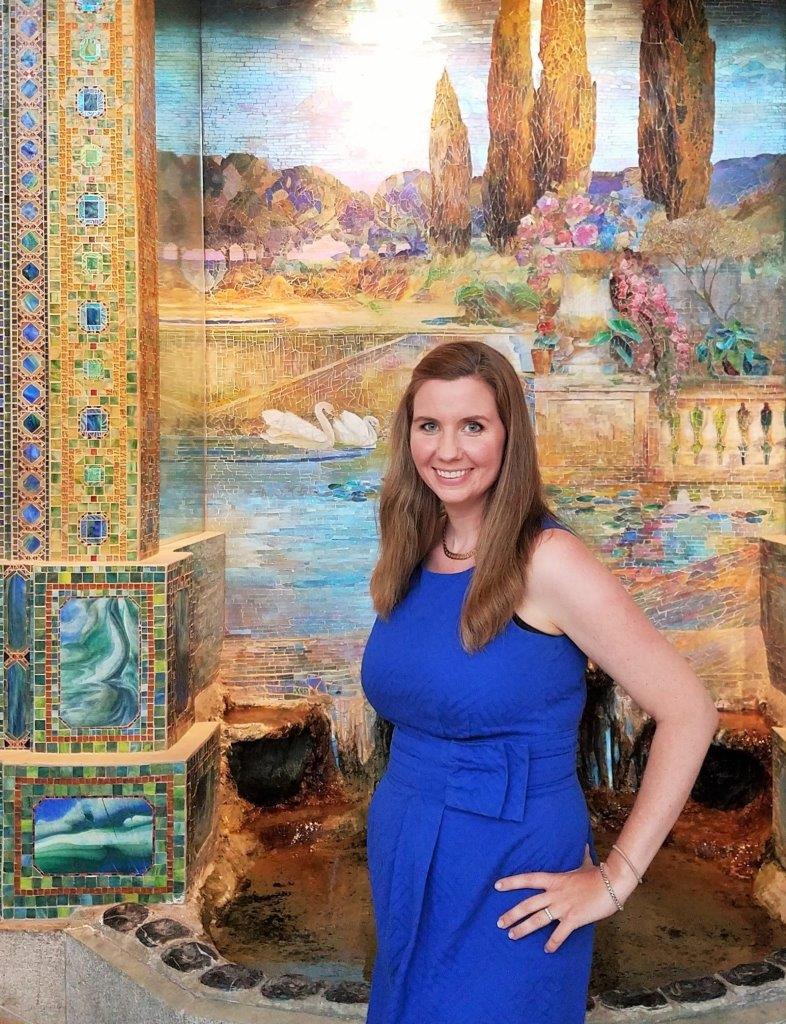
Whitney in NYC
Whitney received her PhD in Art History from the Graduate Center, City University of New York. She specializes in colonial American and U.S. art and has a particular research interest in nineteenth-century immigrant artists working in the United States. Although she currently teaches the history of American and European art at a local university, she has broad professional experience, including research and curatorial fellowships at the U.S. Capitol Building and the Metropolitan Museum’s American Wing. Whether she is giving a tour to families or a group of adults, Whitney brings objects to life with her engaging enthusiasm, vivid storytelling, and passion for historical detail.
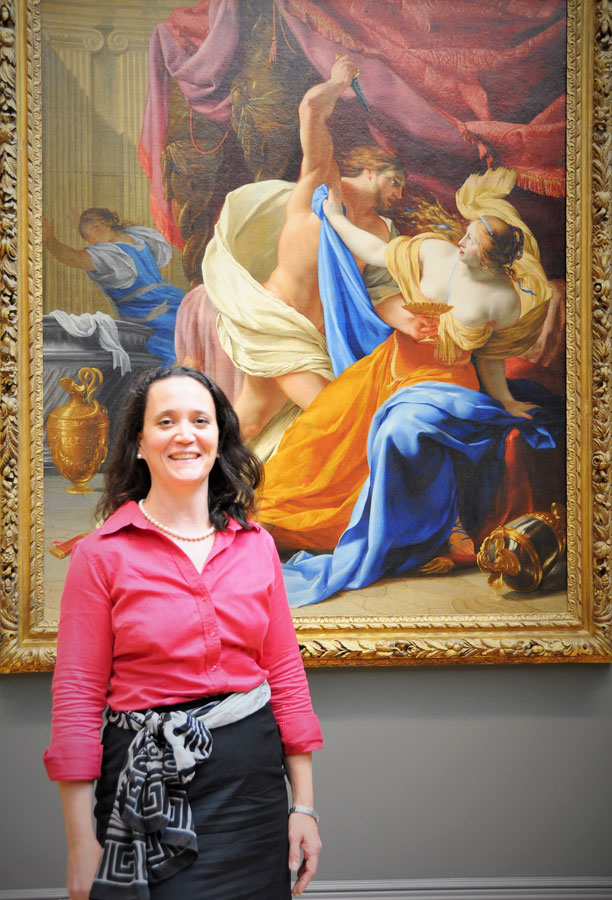
Senta in NYC
Senta earned her MA and PhD from Columbia University in ancient art and is Associate Professor in the departments of Classics & Humanities and Art & Design at Montclair State University. From 2012-2015 she served as Andrew W Mellon Teaching Curator at the Ashmolean Museum of Art and Archaeology, University of Oxford. Senta is Contributing Editor for Western Ancient Art and the Ancient Near East for SmartHistory.org. Senta has conducted tours at the Metropolitan Museum of Art, the Cloisters, the Frick, the Guggenheim and the MoMA as well as travel tours of the Mediterranean; she has a wide-range and an intellectual approach.
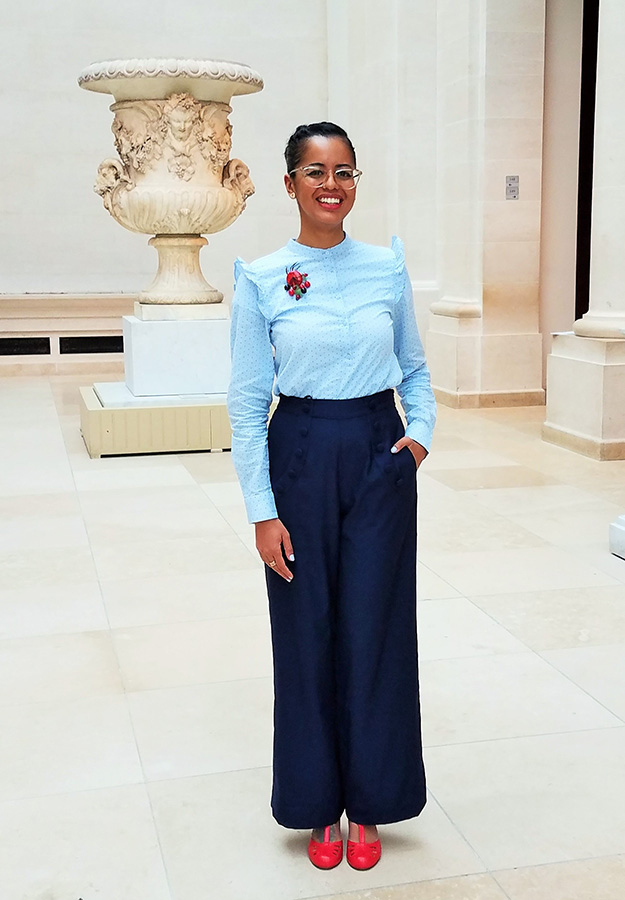
Lili – Family Tours in NYC
Lili is an Art Historian with a strong background in museum education. Born in Brazil, she is committed to bringing the world of art to adults and children in a way that is fun and engaging. As a graduate of City College, Lili has worked with students from all over New York teaching Art History in some of the city’s most prestigious institutions. As an educator, Lili is always up to date; never ceasing her academic pursuits. In her free time, you can find her sewing vintage-inspired clothes or visiting a recently discovered NYC museum. As no surprise, her favorite tour is a family tour through The Met.

Tina in NYC
Tina is an independent curator and art critic based in New York. She has organized exhibitions at the Institute of Contemporary Art at the University of Pennsylvania, FLAG Art Foundation, the Santa Monica Museum of Art, and the Venice Biennale, among other institutions, and has written for publications including Art in America, ARTNews, and Modern Painters. She is currently completing a PhD in modern and contemporary art history at CUNY. Like all of our guides, she’s completed coursework in all major areas and has taught art history in a college environment.
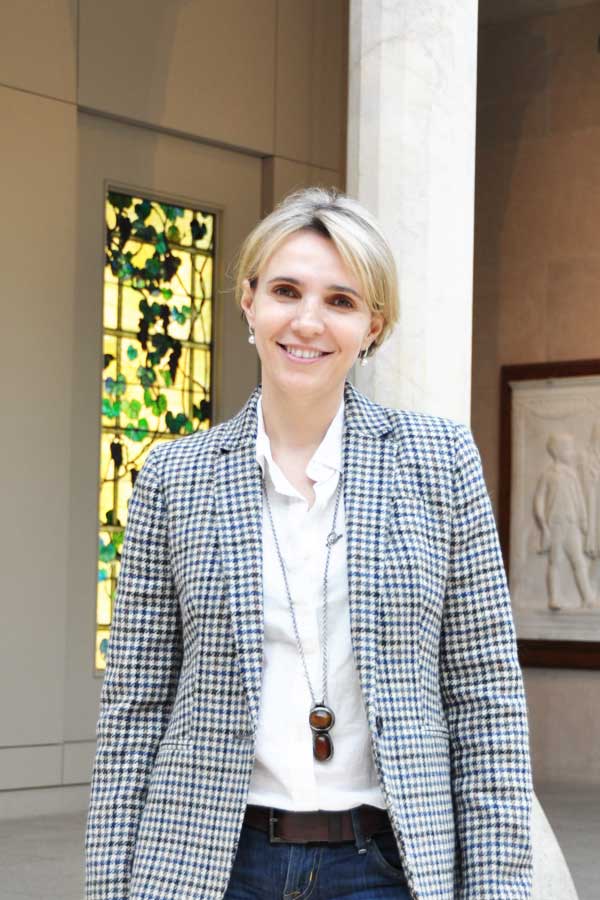
Maite in NYC
Maite graduated as an Archaeologists and Art Historian from Columbia University and received her Master’s diploma from the Institute of Fine Arts at NYU. She specializes in Roman art and architecture and has participated in many excavation in Rome. Maite teaches Art History and History of Architecture at university level and writes for National Geographic Magazine. She also works as an education consultant for different museums in NY and abroad. Maite can provide foreign language art tours in Spanish and Italian (as well as English, of course).
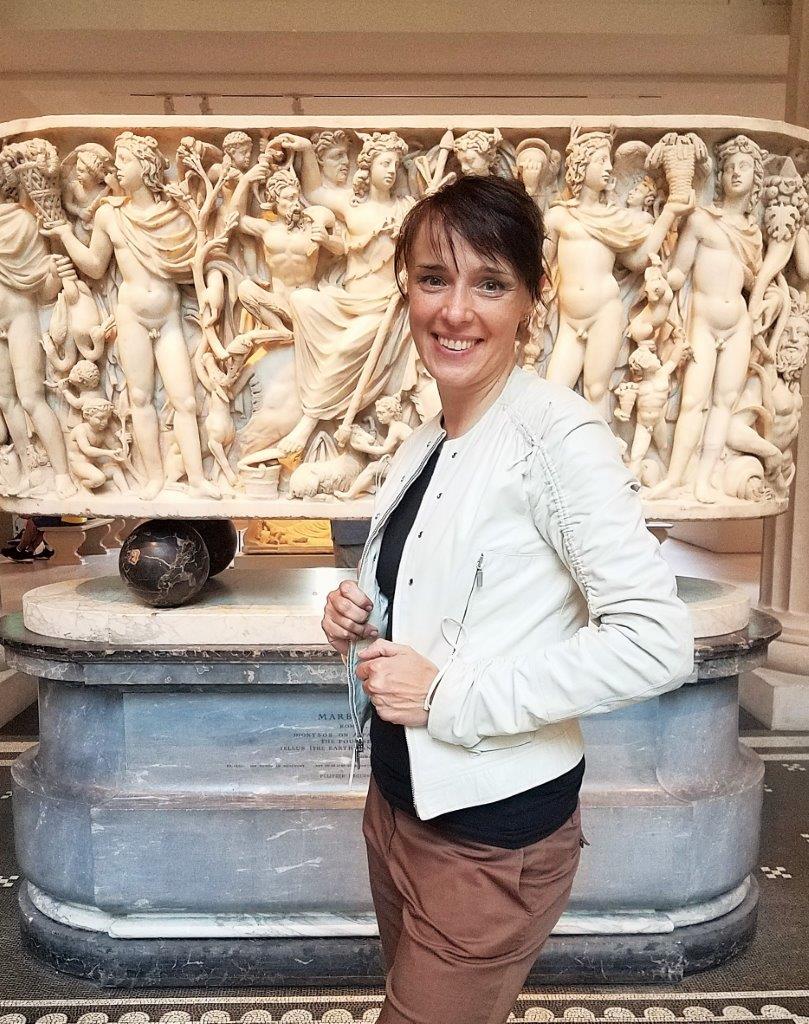
Victoria in NYC
Victoria holds her bachelor’s degree in Art History from the Sorbonne University in Paris and has competed a one year course at Christie’s School of Education of Contemporary Art in New York and NY University. She is trilingual (English, Russian and French) and has conducted tours at most major New York City museums. Her passion lays in history and architecture of New York and she comes with incredible depth of knowledge about this complex and creative city. Victoria has been painting in different mediums for the past 12 years and loves sharing the secrets techniques of old masters and contemporary artists during her tours. She provides a captivating depth for our adult tours yet has a passion for fun family tours as well.
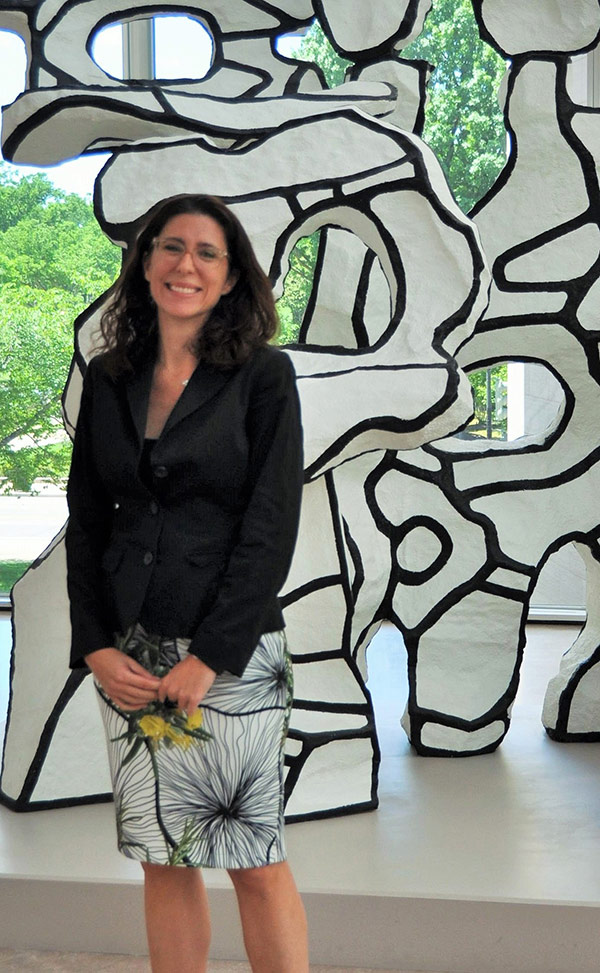
Ana obtained her PhD in art history from the Graduate Center-City University of New York. Her specialization is modern and contemporary art with a focus on Latin American art and photography. She has taught art history at university level and has worked hands-on with objects at the curatorial departments of El Museo del Barrio, The Americas Society, and at The International Center of Photography in NYC. She was also a lecturer at The Museum of Modern Art-MoMA where she enjoyed the challenges of engaging diverse audiences to modern art. Her family moved to DC where she now tours in English, Italian and Spanish to both adults and families.
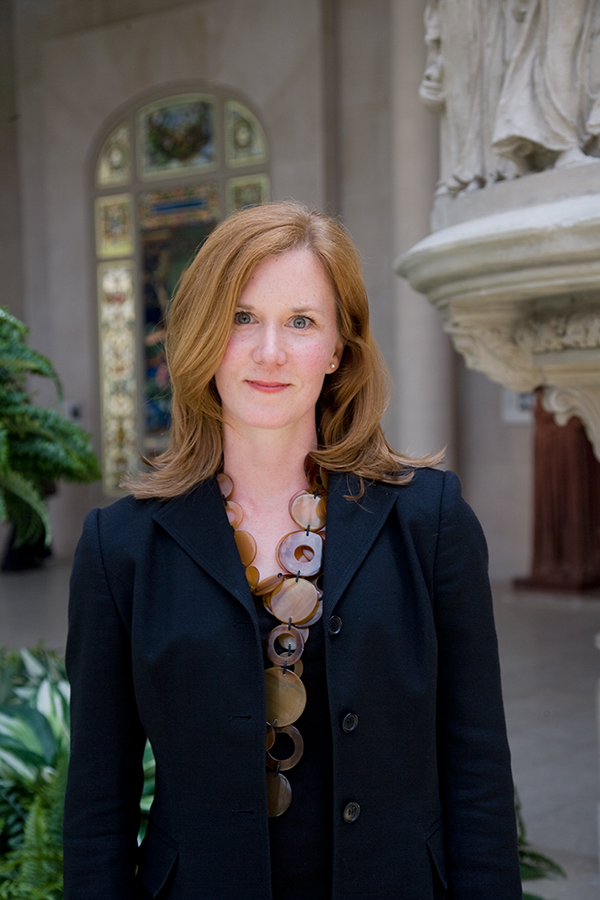
Judith Walsh, Founder & CEO
Judith Shupe Walsh developed ART SMART’s unique approach during her time lecturing and leading art tours for The Metropolitan Museum of Art. She earned her two master’s degrees from the Department of Art History and Archeology at Columbia University —home to one of the foremost graduate art history programs in the nation.
Walsh has lectured for The Cloisters Museum, taught art education at the Cleveland Museum of Art, and was a graduate teacher of art history for Barnard College. She also has worked as a business staff member at Sotheby’s art auction house.
Expedia Rewards is now One Key™
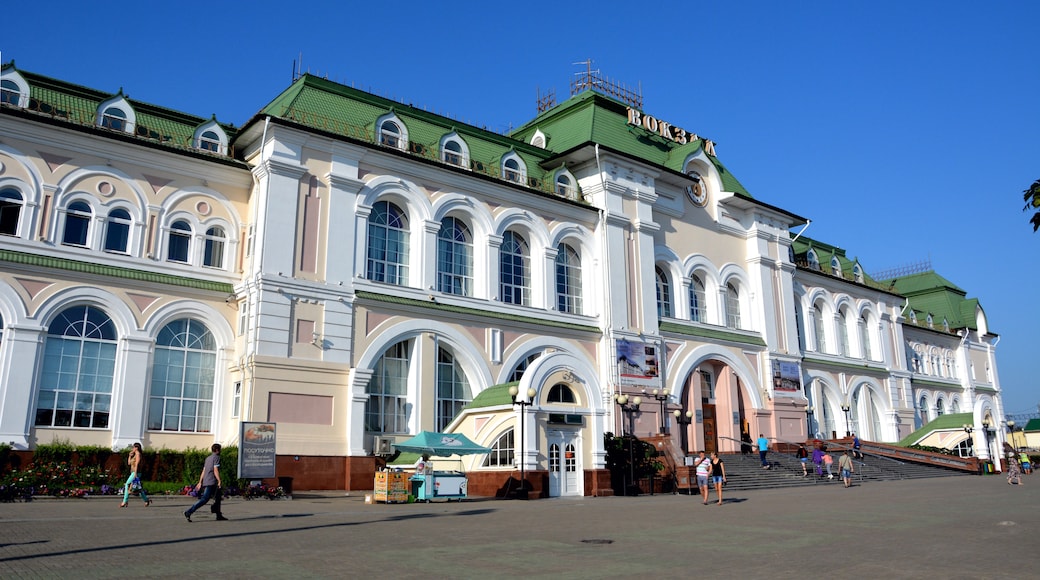
Visit Khabarovsk
Check khabarovsk hotel availability, popular places to visit.
- Transfiguration Cathedral
Find out about the history of Khabarovsk when you take a trip to Transfiguration Cathedral. Experience the area's theater scene and museums.
- World War II Memorial
Find out about the history of Khabarovsk with a stop at World War II Memorial. Experience the area's theater scene and museums.
- Far East Museum of Fine Arts
You can make plans for a show at Far East Museum of Fine Arts during your trip to Khabarovsk. Experience the area's theater scene and museums.
- Khabarovsk Krai Musical Theater
You can enjoy a show at Khabarovsk Krai Musical Theater during your trip to Khabarovsk. Experience the area's theater scene and museums.
- Lenin Square
You can find out about the history of Khabarovsk with a trip to Lenin Square. Experience the area's theater scene and museums.
- Khabarovsk Krai Drama Theater
You can get tickets for a performance at Khabarovsk Krai Drama Theater on your trip to Khabarovsk. Experience the area's theater scene and museums.
Reviews of Khabarovsk
- Cities near Khabarovsk
- Places of interest
- Komsomolskaya Square
- Okladnikov Archaeology Museum
- Khabarovsk Regional Museum
- Khabarovsk City Ponds
- Lenin Stadium
- Bolshaya Medveditsa Shopping Center
- Muravyov Amursky Park
- Vedogon Theatre
- Horizon Shopping Center
- Far Eastern Art Museum
- Khabarovsk Pantomime Theatre
- Khabarovsk Geological Museum
- Fedotov Art Gallery
- Bely Teatr Theatre Organization
- Svobodny Free Theater
- Regional History Museum
- Triada Theater
National Geographic content straight to your inbox—sign up for our popular newsletters here

A guide to Valletta, the Maltese capital with an eye for art and entertainment
In Malta’s harbour-framed capital, a rich and evolving art scene unfolds among honeyed baroque facades, echoing the global influences that have shaped the city over the centuries.
“It’s an extension of God, a celebration of his beauty and perfection,” Father Charles remarks as we stand at the threshold of St John’s Co-Cathedral in central Valletta, necks craned towards the ceiling. Armies of painted angels swirl overhead, elaborate carvings festoon archways lining the nave and painstakingly detailed marble inlay covers the floor. But all this splendour pales in comparison to the gold — thick, gleaming coats of which adorn nearly every surface in dazzling maximalist fashion. “This cathedral was built by the knights, for the knights,” Father Charles continues, a smile spreading across his white-bearded face.
“And as you can see, the knights were very wealthy.” It’s impossible to speak about St John’s Co-Cathedral — or about the Maltese capital Valletta at all — without speaking about the Knights of St John. This religious and military order, founded in Jerusalem in the medieval ages, was charged with the defence of the Holy Land under papal charter. With support from Pope Clement VII, the exclusive collective, consisting solely of wealthy men from elite noble families, made Malta its new headquarters in the 16th century. It would go on to rule here for more than 250 years, building countless artistic wonders including the entire fortified city of Valletta — and its crowning glory, this cathedral.
“The knights came from noble families all across Europe and you can see each of their nations represented in different chapels along the nave,” Father Charles says as we begin to walk the glinting interior. As the cathedral’s in-house conservator, he knows each piece of artwork inside out, and has restored many of them himself. As we move, he shares stories of the paintings, their artists and the trials of upkeep (“I needed to reline the frame on this Mattia Preti painting — it took me a year!”).

In the comparatively austere French chapel he points out the restrained Nazarene-style fleur de lis motif; and in the Aragon, elaborate metallic sculptures. It quickly becomes clear that St John’s Co-Cathedral is not just a church, but a showcase of some of the finest 16th and 17th century European art and architecture, a bit like a living Louvre or Rijksmuseum. “Look at this wood; it doesn’t come from Malta, we don’t have big trees like this,” Father Charles enthuses over a ceiling beam, before adding, “The knights brought in all the best artists of the time — and all the best materials too.”
Stepping back out into the daylight after my ecclesiastical art-history lesson, winged angels and silver-plated liturgical paraphernalia still spiralling through my mind, I find I have a new-found appreciation for Valletta’s baroque downtown. Handsome honeyed facades are lined in ornate stonework, subtle cream townhouses sport painted wooden gallarija (closed balconies) and narrow cobbled streets run downhill towards the expansive Grand Harbour, its waters criss-crossed with yachts and colourful luzzu fishing boats.
As I wander through the compact grid of streets, a UNESCO World Heritage Site, I pass restaurants, gift shops and pods of tourists, as well as locals lucky enough to live among this aesthetic wealth year-round — couples walking fluffy Maltese dogs and collared priests scooting around corners into tiny churches. The old city headquarters of the knights may be extraordinarily pretty, but they’re also brimming with life.
( How to spend a day in Valetta, Malta's baroque, harbourside city .)
It wasn’t always like this, of course. When the knights began to build their capital in 1566, atop a raised peninsula on Malta’s east coast, the land — flanked by that rambling natural harbour — was almost barren. Or so it seemed. Long before the knights arrived, however, the area had been pockmarked with the imprints of much more ancient peoples.
That’s what I learn at the National Museum of Archaeology, where I head that afternoon, less than a block away from the cathedral. Simple displays in glass cabinets belie the irreplaceable treasures within: artefacts recovered from Malta’s numerous neolithic sites. Scattered across the island, some spots are thought to date to 3600 BCE — older than the Egyptian pyramids or Stonehenge.
Over millennia, travellers from across the Mediterranean came to this sun-soaked island to settle, each civilisation leaving their mark before the next succeeded. As I move from room to room in the museum, I learn about the prehistoric Sicilians who ushered in elaborate megalithic structures between 4000-2500 BCE, and the Phoenicians’ smooth pottery, precious gold amulets and purple dyed fabrics dating to around 700 BCE.

I see rudimentary miniature sculptures and stone necklaces of imported greenstone, and swirling stone carvings removed from the 5,000-year-old Tarxien Temples, whose ruins lie four miles from the museum.
Most remarkable of all is one of the smallest exhibits: a tiny clay figure entitled Sleeping Lady, discovered in the subterranean galleries of the Hal Saflieni Hypogeum — an ancient necropolis less than 15 minutes’ drive from where I stand. Lying on her side, eyes peacefully closed, she looks as if she’s just slipped into her eternal slumber, despite being carved millennia ago. As museum visitors pause in the dimly lit exhibition space to admire her gentle serenity, they can’t help but hush, as if not to wake her.
Timeless appeal
Over my next few days in the city, more of Valletta’s artistic riches slowly reveal themselves. The MUŻA National Museum of Art, in a beautiful baroque building a short walk from the National Museum of Archaeology, bursts with oil paintings, mosaics and polished wooden marquetry tables. In the historic Teatru Manoel, one of the oldest working theatres in Europe, a grand chandelier illuminates rows of gilded boxes.
Casa Rocca Piccola — a 440-year-old noble family home-cum-museum — showcases an extensive collection of visual treasures, including elaborate gold filigree and Maltese lace. There are historic knights-related oddities, too, such as a chess set minus the queens, designed specifically for the male-only order. As I enter a dining space laid with precious cutlery and ceramics, I feel almost like I’m in a residential version of St John’s Co-Cathedral, unsure how to take in the sheer amount of artistic detail in front of me.
As I continue to explore, I find that the city’s aesthetic charm is not only hidden behind closed doors. One evening, at sunset, I stand in the landscaped Upper Barrakka Gardens overlooking the harbour as toy-sized boats zigzag through the waters far below and nature paints the sky pink and orange with its own masterful palette.

It would be easy to think of Valletta as being a kind of artistic timewarp, an unchanging world of gilded wonder. And yet its artistic evolution is not complete. A new chapter begins later this year with the opening of MICAS — the Malta International Contemporary Art Space — in vast historic fortifications and ramparts just outside the city walls.
“These works address our sense of space and time, and how these can be distorted,” says British contemporary artist Conrad Shawcross, the museum’s first exhibitor, as he leads me through a small portion of the site already open to visitors. We wander along the bleached stone ramparts towards old military vaults, ducking into the squeezed spaces to see his intricate light installation, Slow Arc Within a Cube. In the darkness, metallic grid sculptures with moving bulb mechanisms throw metamorphosing shapes across the ceiling, walls and floor, appearing to change the dimensions of the space with every passing moment.
“I made this piece 10 years ago and it’s been shown in various locations around the world, but I’m delighted it’s found a permanent resting place here in Malta,” explains Conrad as we watch his light machines cast hypnotic illuminations. One of MICAS’s aims is to balance Malta’s extensive history with exciting artistic innovation — both local and global — and this blend of fort architecture and modern craftwork seems the perfect embodiment. It’s a theme explored further in Conrad’s large-scale installation on the ramparts, Beacons. Blinking against the noon sun after our time in the dim vaults, we gaze up at the series of huge colourful discs, mounted flag-like on poles. Visible from far across the harbour, they look like some kind of naval semaphoric code — and in fact, Conrad tells me, they are. Pointing to each oversized disc in turn, he spells out their succinct meaning: ‘NOW’.
On my final night in the city, I return to St John’s Co-Cathedral. The clusters of visitors have cleared out for the day, leaving the vast interiors eerily quiet. Showing my concert ticket to the guard, I’m ushered into a small oratory, where I take a seat among an intimate audience.
Lights are dimmed, a harp is played and a woman sings sweet baroque medleys by candlelight as we gaze up towards the altar, which is adorned with what is arguably Valletta’s most precious artistic treasure of all. The Beheading of St John the Baptist, an oil painting by 16th-century Italian artistic master Caravaggio, stretches more than five metres wide, a brutal and haunting scene of disimpassioned spectatorship. A prostrate St John, with his throat brutally slit, bleeds on the ground while callous onlookers support a stoney-faced executioner. The only humanity in the painting is embodied by a single, horrified woman.
The longer I stare, baroque music washing across the oratory, the more details emerge from the darkness. Caravaggio’s signature in the pool of blood — this is his only signed work — and the glint of the silver knife. It induces awe not for ornate gilding, like so much in the city, but for intimate drama. We’re a small group of strangers collectively witnessing the stirring tragedy of this painting, 400 years after the artist put brush to canvas.
It’s hard to compute all that Caravaggio’s eternal masterpiece has witnessed in its long history, or what it will see in years to come. But for me, a fleeting visitor to this place, the concert becomes a vivid living postcard of my time in Valletta. A brief but beautiful moment shared by many over the centuries.
Related Topics
- CITY GUIDES
- HISTORIC PRESERVATION
- ART HISTORY
- CULTURAL TOURISM
You May Also Like

How to spend a day in Valletta, Malta's baroque, harbourside city

A guide to Strasbourg, Alsace's culturally unique capital
Introducing nat geo kids book bundle.

Lisbon on a high: daring street art and hilltop lookouts in Portugal's capital

Visit these cultural hot spots in 2024

10 whimsical ways to experience Scotland

10 experiences families shouldn’t miss in San Diego

China just had a museum building spree. Here are 6 of the best.
- Environment
- Paid Content
- Photography
Major destinations
- Airport 18, T1, T2, T4
- Botanical Gardens' 9, 25, 29, 33, 54
- City History Museum 1, 54, 56, 57, T5
- Komsomolskaya Square 1, 9, 14, 19, 29, 34, 38, 55, 56, T1, T3
- Lenina Square 14, 19, 21, 29, 34, 38, 55, 56, T1, T3
- Railway Station 1, 6, 7, 11, 13, 20, 22, 24, 26, 34, 54, 57, T2, T5
- Slavy (Glory) Square 1, 9, 29, 33, 34, 56

The Far Eastern Museums
There is a fantastic cluster of top notch museums along Shevchenko Street, just behind the tall blue-domed Church of Theotokos on Komsomolskaya Square towards the river and stadium. Not only are the museums some of the best in the far east, they also make their home in some impressive century-old buildings dating back to before the revolution. After a visit, the nice river promenade is just a short walk away, so you can wash all that new found knowledge away with some pivos in good company.

Tugged away just across the next street behind the military museum, you also find the Archeology Museum on Turgeneva street.
Navigation menu

Europe Travel Guide
Last Updated: April 18, 2024

From beautiful Paris to smoke-filled coffeeshops in Amsterdam, Oktoberfest to La Tomatina, Europe is a massive, diverse continent with an unlimited assortment of things to see and do. You won’t have any problem filling your time, whether you’re backpacking Europe for a few months on a budget or just spending a few weeks there on a well-earned vacation.
The continent boasts wonderful beaches, historical architecture, amazing wine, and tons of world-class festivals. Every country is incredibly different from the next too, providing limitless variety in what you do during your trip.
I first backpacked Europe in 2006 and was hooked immediately. I’ve been visiting every year since, have run tours around the continent, and even wrote a book on traveling in Europe . It’s a destination I love and never get tired of exploring.
This guide will give you an overview of Europe and the tips and tricks you need to start planning your trip. I’ve also written extensive travel guides to each country on the continent (linked below in this post) so you can get more in-depth information for your specific itinerary too!
Table of Contents
- Things to See and Do
- Typical Costs
- Suggested Budget
- Money-Saving Tips
- Where to Stay
- How to Get Around
- How to Stay Safe
- Best Places to Book Your Trip
- Related Blogs on Europe
Click Here for Country Guides
Top 5 things to see and do in europe.

1. Tour the Greek Islands
These islands are the mecca of summer beach fun and each is unique in its own great way. There’s Ios (beach party central with archeological ruins and awesome boat tours); Kos (ancient ruins and nature); Crete (Bronze Age ruins of Knossos, hiking, beaches, and wine), Santorini (iconic blue water, white buildings, and local wineries); Mykonos , (the upscale party island with beautiful beaches, villages, and sunsets), Naxos (best island in the Cyclades). Plus, Milos, Corfu, Lemnos, Zakynthos, and so many more! With hundreds of islands in the country, you can always find what you are looking for!
2. Ride the rails
Europe is famous for its international rail system. Rail passes like the Eurail Pass have been around forever and still make it very easy to get from country to country on a relatively small budget (and with lots of flexibility). Europe has some of the fastest trains in the world that travel up to an incredible 217 mph (350 kph). The whole continent is connected by trains and there’s a growing push for even more connections and long-distance, high-speed trains in order to reduce flying and help combat climate change. There’s nothing more quintessential than riding the trains in Europe and I encourage you to take as many trains as possible. It’s one of the best ways to see the continent.
3. Get lost in Paris
The “City of Lights” is everything people say it is. I fell in love with it the first time I stepped foot in Paris . The city is just magical. You have a ton of museums, cafes, jazz clubs, famous art, and beautiful architecture. I love just strolling around the streets of the Quartier Latin (Latin Quarter) or Montmartre neighborhood as it makes for a breathtaking day. Another one of my favorite things to do here is just sit in the Jardin des Champs-Élysées park and picnic like the Parisians. For something a bit different, check out the famous Catacombs and Paris Sewer Museum. With so much to offer in the way of culture, history, and gastronomy, it would take years to see everything here but you can still get a good feel of the city in a few days.
4. Go city hopping
There are so many amazing cities in Europe that we’d need a top 100 to list them all. Here are some of my personal favorites and must-see cities: London is rich in history, culture, and the famous Big Ben clock; Edinburgh is a vibrant medieval city with cozy pubs and a famous castle with a huge New Year’s Eve Party; Amsterdam has cozy coffee shops and canopied tree-covered canals; Berlin has a wild party scene, street art, and the Berlin Wall; Barcelona has tapas, beach, and unique Gaudi architecture; coastal Lisbon has colorful tiles, old tramcars, cobblestone streets and plenty of fresh seafood; Prague has a beautiful intact Old Town, incredible architecture and eclectic bars; Tallinn Estonia has beautiful medieval buildings with colorful roofs. Florence is a mecca for Italian Renaissance architecture, art history, and gelato; Stockholm mixes medieval architecture and modern art and design. Crisscross the continent, take in the culture, and enjoy all the historic cities!
5. Hit the Alps
Whether you go skiing in the winter or hiking in the summer, the Alps hold some of the most breathtaking views in all the world. You don’t even need to be an expert hiker because there are mountain trails for all levels and crystal-clear Alpine lakes. Check out the spectacular Eibsee trail loop in Bavaria at the foot of Die Zugspitze, Germany’s tallest mountain, for the clearest, multi-colored, sparkling lake you’ve ever seen. Or the Männlichen Kleine Scheidegg Panorama trail in Switzerland’s stunning green and snow-capped Alps. Or visit Italy’s Dolomites in South Tyrol for the scenic Seceda trail. The Alps have trails for every fitness level and in every season.
Other Things to See and Do in Europe
1. tour amsterdam.
I love Amsterdam so much that I lived here for a short period of time in 2006. Here cobblestone and brick streets weave around lovely canals as people ride their bikes to and fro. My favorite things to enjoy here are Amsterdam’s vibrant art and music scene and there are also a ton of interesting museums here like the Anne Frank House, FOAM, the history museum, and the hemp museum. Be sure you get out of the center into Jordaan and Oost with their wonderful outdoor cafes and fewer tourists. Also, a visit to Amsterdam wouldn’t be complete without a canal cruise to visit the many islands and there are many to choose from that include snacks and drinks, sunset cruises, live guided tours, and more.
2. Hang out in Barcelona
Barcelona is a city that goes 24 hours a day, 7 days a week. It truly could give NYC a run for the “city that never sleeps” title. Be prepared for late-night dinners and parties until dawn. Besides a great food and nightlife scene, there is a wonderful beach, tons of Gaudi architecture (including the fairytale-like Parc Güell, as well as the iconic Sagrada Familia , which has been under construction for over 100 years!), incredible food tours, one of the best history museums in the country, and lots of outdoor spaces. What I love about Barcelona is that when you’re ready to chill, you can wander around Parc de la Ciutadella and marvel at the majestic fountains, plant life, and buildings created from an ornate military fortress.
3. Visit Berlin
Hip and trendy Berlin is an energetic destination. It is one of Europe’s most affordable capital cities, with a vibrant music and art scene and a growing foodie movement. Be sure to spend some time learning about the city’s darker history via the many excellent museums, memorials, and landmarks. The East Side Gallery, a section of the Berlin Wall that’s now painted with murals, and the Memorial to the Murdered Jews of Europe are two especially powerful reminders of Germany’s past. For all periods of German history, don’t miss the Deutsches Historisches Museum (German Historical Museum) – it’s one of the best history museums in the world. Once you’ve had your fill of history, relax in Berlin’s many green spaces, from Tempelhof Field, the site of a former airfield and popular local hangout spot, to Tiergarten, a tree-covered former hunting ground for 17th-century aristocrats.
4. Drink beer at Oktoberfest
Oktoberfest is a must for anyone going to Germany at the end of September. While not a budget option since beers now cost 15 € a maß, I love the energy and friendly camaraderie this event inspires. For two weeks, millions of people from all over the world gather for lots of beer, excitement, music, and wild fun. Watching thousands of people sing together, raising quart-sized beer mugs for endless toasts, and enjoying the general party atmosphere makes you feel good about the world. (Or maybe that’s just the beer?) Just be sure to book your accommodation well in advance and be prepared to pay top prices for them. If you don’t have an outfit, don’t worry, there are plenty of shops even at the main train station where you can buy a Bavarian dirndl dress and men’s lederhosen.
5. Experience London
Get a taste of English culture in diverse London . The museums here are some of the best in the world (most are free) and include the Tate, the British Museum, the City Museum, the National Gallery, the Historical Museum. There’s no shortage of iconic sights here as well, with Big Ben, the House of Parliament, the London Eye, the Tower of London, Tower Bridge, and of course, Buckingham Palace. I love London’s diversity because of the countless international eateries with great food and wonderful pub culture, perfect for after a long day seeing the sights. Head to Brick Lane on the weekends for some amazing food and craft markets. I prefer Paris to London, but there is something sophisticated and fun about London. Just watch those pints — London is not a cheap destination!
6. Get outdoors in Scandinavia
My favorite region in Europe is Scandinavia. The quality of life here is high, the people are beautiful and friendly, and the cities are clean and historic. Cycling the cities, taking canal tours, hiking the vast forested areas, archipelago hopping, enjoying fika (a Swedish coffee break), and warming up in saunas are just a few of the popular activities that await you here. True, this area of Europe is not cheap, but there are plenty of ways to reduce your expenses. Don’t let the high prices scare you away. Highlights for me include Copenhagen , Stockholm , Gotland, Norway’s fjords, and Lapland in Finland .
7. Get enchanted in Prague
Prague has an amazing history and is one of the most beautiful and picturesque cities I’ve ever seen. Highlights include the 9th-century Prague Castle, the magnificent Charles Bridge (built in the 14th century and one of the oldest standing bridges in the world), the 10th-century old square with its iconic astronomical clock, and the winding Jewish Quarter. Even if you only have a few days there don’t miss the free walking tour which is one of my favorites in Europe and the best way to learn about the Old Town and the tragic history of the city that went from thriving Bohemian capital of art, music, and literature to part of the Iron Curtain after WWII. Some of my favorite gems here include the fantastic black light theater shows in 4D and the one-of-a-kind medieval dinner show in an old tavern complete with musicians and jugglers not to mention hearty food and drinks. During the weekends it heaves with people enjoying the bars, cheap beer, and delicious food so try to visit during the week (and in the spring or fall) to beat the crowds.
8. Relax on the French Riviera
Here, you can pretend to live the high life for a little bit. Have fun in the sun, relax on the beach, swim in azure blue water, hobnob with the rich and famous, and sail on (or gaze at) gigantic yachts. As for cities, Nice is nice with its palm-tree-lined promenade, old town, and many art museums. If you want to go see how the rich and famous live, spend an afternoon checking out Cannes to soak up some glamorous vibes on La Croisette where they hold the famous Cannes Film Festival. The kingdom of Monaco with its tiny streets, beautiful buildings, and world-famous casino is just a skip away too.
9. Enjoy the great outdoors in Interlaken
Located in the beautiful mountains of Switzerland, Interlaken is a gorgeous place to unwind with fantastic hiking, delicious hot chocolate, and plenty of outdoor sports. The area is full of natural attractions to explore, including the St. Beatus Caves (complete with a legendary dragon), the cascading 500-meter-high (1,640 feet) Giessbach Waterfalls, the Jungfraujoch mountain railway (which leads to the highest train station on the continent), and a plethora of lakes (hence the town’s name). It’s a good alternative to all the cities and museums. Interlaken is also a popular party destination for backpackers and other young travelers. By far, my favorite scenic and visually stunning trail was the Oberberghorn panoramic hike, where you can wander the green mountain ridge ogling the amazing views and the turquoise-blue Brienzersee.
10. Experience history in Rome
In this thriving historical city, you can’t walk two feet without stumbling over a ruin, making Rome a history buff’s dream. Its tiny streets are perfect for wandering as you explore the Colosseum, see the Forum and Palatine Hill, visit the Pantheon, spend time in Vatican City, admire the Spanish Steps, and toss coins into the famous Trevi Fountain. The skip-the-line tickets can definitely be worth it so you don’t waste time waiting outside attractions. Rome also has amazing food (it’s Italy, after all) and nightlife. Visit the Trastevere area for a taste of “local” Rome and chill bars. It’s my favorite area in the city because you feel like you’re in a small village in the middle of a big city.
11. Hike around the Cinque Terre
Cinque Terre is my favorite part of Italy. These five beautiful cliffside towns are perched near warm waters and beautiful olive and grape groves. There are wondrous and strenuous hikes in these hills; for a real challenge, take trail #8. Or just walk the coastline for something less difficult. Many activities here revolve around the coastline: kayaking, swimming, having a beach picnic or visiting the Technical Naval Museum. If you happen to be here in December or January, don’t miss the Nativity Manarola, the world’s biggest lighted nativity scene.
12. Tour Krakow
Krakow looks like it stepped out of a medieval postcard. It’s a hip, trendy, and youthful city that’s the center of education in Poland, meaning there are a lot of university students here. Most travelers come to party here (the vodka is cheap) but try to enjoy the city’s history and food besides just the bars. Walk the Royal Road through the Old Town to the 13th-century Wawel Castle, tour Schindler’s Factory (where Schindler saved over 1,200 Jews during World War II), and visit the sobering Auschwitz-Birkenau concentration camp. You can also take a fascinating day trip to the UNESCO World Heritage Wieliczka Salt Mine, a 13th-century mine with cavernous chambers, statues, chapels, chandeliers, and cathedrals all carved out of salt.
13. Visit the ruin bars in Budapest
The coolest nightlife in all of Europe is found in Budapest . Built in abandoned buildings, ruin bars feature funky art installations, repurposed furniture, and quirky decor. They are amazing, fun, and great places to meet locals, as people of all ages flock here. Open since 2001, Szimpla Kert is the original ruin bar and one of my favorites, along with Instant-Fogas Complex, which takes up an entire building and is actually many different bars in one. Don’t skip the ruin bars — they’re one of the most unique things about the city!
14. Explore Cornwall
The best part of England is outside London, yet unfortunately, not a lot of travelers leave London. Head west to the area of Cornwall for cheaper prices, welcoming locals, natural beauty, great hiking, rolling hills, plenty of medieval castles, and picturesque small towns. If you like biking, the Camel Trail from Bodmin to Padstow is worth the trip and you even pass by a local vineyard. It’s an easy way to spend a day (and it’s pretty flat so it’s not too hard to do.) Plus, I had the best fish and chips in Cornwall! Overall, it’s what you think of as “traditional England.”
15. Walk the Camino
El Camino de Santiago (The Way of Saint James) is an ancient pilgrimage route that stretches from France all the way across northern Spain. It is a 500 mile (800 km) trail that winds through incredible terrain, ending in Santiago de Compostela at the cathedral where St. James is supposedly buried. As a pilgrim, you get a “pilgrim’s passport” which allows you to stay in affordable pilgrim-only hostels, making this a surprisingly budget-friendly adventure. While it usually takes over a month to complete, you can just walk a section if you don’t have the time. To receive a “Compostela” (certificate of completion), you just need to walk the last 62 miles (100 km), which generally takes 4-5 days.
16. Throw tomatoes during La Tomatina
By far my favorite festival, the largest food fight in the world happens during the last Wednesday of August in Bunol, Spain. What started in 1945 as a local brawl has turned into a massive event drawing tens of thousands of people from all over the world. For about an hour, everyone throws tomatoes at each other, leaving streets ankle-deep in tomato juice. Afterward, everyone walks down to the river, cleans off, and then heads to the town square for sangria and music.
17. Find Dracula in Romania
Not a lot of people visit Romania but this underrated country in Eastern Europe has undiscovered yet picturesque medieval towns like Brasov (home to “Dracula’s castle”), Sighisoara, and Sibiu; gorgeous beaches on the Black Sea; and incredible hiking in the Fagaras Mountains — all at dirt-cheap prices. Other major sights include frescoed Byzantine monasteries, the steepled wooden churches of Transylvania, the hip university town Cluj-Napoca, the post-communist capital of Bucharest, and the Danube Delta, a huge nature reserve.
18. Drink whisky in Islay
Whisky has a long history on Islay , an island off Scotland’s west coast. It’s been made there since the 16th-century — first in backyards and then, starting in the 19th-century, in large distilleries. Over the years, whisky from the island came to be considered a specialty and was used to flavor a lot of other blends on the mainland. There are currently nine working distilleries on the island, all located along the island’s shores, with Laphroaig, Ardbeg, and Lagavulin being the most famous. Most distilleries here make single-malt Scotch, meaning that only one type of grain (barley) is used. My visit here was amazing and, even if you don’t like whisky, there are tons of good hikes and walks throughout this magnificent island.
19. Explore Iceland
Iceland is a magical country with majestic waterfalls, hidden hot springs around every corner, and sweeping vistas unlike anywhere else in the world. After my first visit, the country quickly became one of my favorite countries. With whale watching in the summer, the northern lights in the winter, and geothermal baths for soaking in year-round, there really is no bad time to visit! While Iceland’s main draw is the epic natural landscapes, it’s worth spending a couple of days in Reykjavik with its café culture, artsy feel, and brightly colored wooden row houses.
20. Sail the Croatian coast
With calm winds, short distances, a coastline littered with over 1,000 islands, and countless historical sites, Croatia is one of the world’s best sailing destinations. If you can, go during the shoulder season when you can find some great deals. Plan to stay at least a couple of days on one of the islands, with the most popular being Brac, Hvar, Krk, Cres, and Lošinj. However, don’t be afraid to get off the beaten path and explore some of the lesser-known islands such as Silba, Vis, and Lastovo. If you want to splash out and spend a week partying on a yacht, check out The Yacht Week, which hosts week-long parties, complete with DJs, from May-September. You can book a full boat to share with friends or just a cabin if you’re traveling solo. Prices start at 5,250 HRK per person and go up to 9,300 HRK.
21. Explore the Balkans
While the Balkans have become more popular with backpackers in recent years, it’s still largely overlooked by most budget travelers, despite being an extremely budget-friendly region. The Balkan peninsula is home to great (and again, overlooked) wine, beautiful medieval towns like Kotor and Mostar, stunning mountainous landscapes, beautiful pebble beaches, coffee culture, fresh, hearty yet inexpensive food, and museums covering the area’s history, including the most recent turbulent events of the early 1990s. I especially loved my time in Albania . Don’t miss the beautiful beaches in Ksamil, nicknamed the “Maldives of Europe’ as well as the mountain village of Gjirokastër, which was occupied by Romans, Byzantines, and Ottomans. The Balkans have so much to offer for every budget and every country has its unique cultural flavor.
22. Take a wine tour in the Loire Valley
Located in central France, the picturesque Loire Valley is a UNESCO World Heritage site and stretches 280 kilometers (174 miles) along the Loire River. One of the major wine-producing regions of France, the area is home to some of the best wines in the world, with over 1,000 vineyards open to the public. Even those who don’t drink wine will enjoy the beautiful small towns, great food, and the region’s over 300 impressive chateaux. I loved the medieval Chenonceau Castle and Chateau Villandry and the small villages like Saint-Florent-le-Vieil. Spring and Autumn are my favorite times to visit because you can go biking and do outdoor activities when it’s not too hot and there are fewer people. It’s an area not to be missed.
23. See Fado in Portugal
Fado is an important musical tradition in Portugal , originating in Lisbon and stretching back some 200 years. The word “fado” likely stems from the Latin word for fate, and it’s very haunting, poetic, and emotional music. Most of the songs follow themes of loss and mourning, and the music was popular with the working class (especially sailors). Performances normally take place in restaurants during dinner. In Lisbon, head to Clube de Fado, Tasca do Chico, Parreirinha de Alfama, or Senhor Vinho.
24. Tour green Slovenia
Slovenia is one of Europe’s least-visited destinations, which is mind-blowing to me because it’s an amazing place to visit. Slovenia offers all the beauty of Western Europe but at a fraction of the cost and with a fraction of the crowds. Perfect for outdoor adventure lovers, Slovenia offers rugged mountains, untouched landscapes, fantastic ski resorts, plentiful wine, sprawling cave systems, incredible food, and postcard-perfect lakes, such as the famous Lake Bled with its castle on an island. I loved Piran, Slovenia’s often overlooked coastal Venetian-style harbor town that was actually founded 3000 years ago. Stroll around its beautiful windy cobble-stoned streets, beautiful plazas, and take advantage of the many affordable restaurants right on the water. Make sure to also spend a few days in the country’s capital, Ljubljana, known as one of the continent’s greenest and most livable cities. Take a river cruise to see the city and enjoy the friendliness of the locals.
For more information on specific countries in Europe, check out the guides below:
- Albania Travel Guide
- Austria Travel Guide
- Belgium Travel Guide
- Belarus Travel Guide
- Bosnia & Herzegovina Travel Guide
- Bulgaria Travel Guide
- Czechia Travel Guide
- Croatia Travel Guide
- Denmark Travel Guide
- England Travel Guide
- Estonia Travel Guide
- Finland Travel Guide
- France Travel Guide
- Germany Travel Guide
- Greece Travel Guide
- Hungary Travel Guide
- Iceland Travel Guide
- Ireland Travel Guide
- Italy Travel Guide
- Latvia Travel Guide
- Lithuania Travel Guide
- Malta Travel Guide
- Moldova Travel Guide
- Montenegro Travel Guide
- Netherlands Travel Guide
- Norway Travel Guide
- Portugal Travel Guide
- Poland Travel Guide
- Romania Travel Guide
- Scotland Travel Guide
- Slovakia Travel Guide
- Slovenia Travel Guide
- Spain Travel Guide
- Sweden Travel Guide
- Switzerland Travel Guide
- Ukraine Travel Guide
Europe Travel Costs

Accommodation – Accommodation prices vary greatly by region. In Western Europe, hostel dorm rooms cost between 25-45 EUR per night, depending on the room’s size and the popularity of the hostel. I stayed in a 6-bed dorm in Berlin for 20 EUR, while the same one would have cost me around 45 EUR in Paris. A room in Paris costs on the higher end and a room in cheaper Athens costs on the lower end.
In Eastern Europe, hostel dorm rooms cost between 10-15 EUR per night depending on the size of the dorm room and the popularity of the hostel. The further east you go, the cheaper it gets. Expect to pay around 30-60 EUR per night for a private room that sleeps two.
In Scandinavia, hostel dorm beds cost around 25-45 EUR, while private rooms are 65-80 EUR. Budget hotels start around 85 EUR.
Most accommodations offer free linens, free Wi-Fi, and a lot offer free breakfast, but it’s important to check specific websites for exact amenities.
Campsites cost between 10-15 EUR per night for a basic plot for two without electricity.
Food – Food traditions in Europe run deep, stretching back centuries to become integral parts of each country’s culture. From baguettes in France to tapas in Spain, from hearty Eastern European stews and goulash to the fresh vegetables and olive oils of the Mediterranean, European cuisine varies as much as the countries themselves. Food prices differ greatly across the continent, so check individual country guides for specifics.
But no matter where you are, even in the more expensive countries, finding places to eat within your budget is easier than you might think. Throughout Western Europe, you can find small shops, street food stalls, or food trucks where you can get sandwiches, gyros, kebabs, slices of pizza, or sausages for between 3-7 EUR. These shops are most often found in train stations, bus stations, and main pedestrian areas, and offer cheap food alternatives that can have you eating on 12-17 EUR per day. Fast food (think McDonald’s) costs around 7-10 EUR for a combo meal.
Turkish, Middle Eastern, and Vietnamese eateries abound in Germany, while Indian food is incredible and everywhere in the United Kingdom. Meals at these restaurants usually cost between 8-12 EUR.
Restaurant meals in casual, traditional eateries generally cost around 13-25 EUR for a main dish and drink. Food is much cheaper in the east than in the west, and in the west, northern regions like Scandinavia and the UK are more expensive than southern countries like Spain, Portugal, and Italy.
In Eastern Europe, even if you are eating out for all your meals, you can still get by on a food budget of as little as 15 EUR per day.
For drinks, a pint of beer is 2-5 EUR, a glass of wine is 2-7 EUR, a cappuccino is 2-5 EUR, and cocktails range from 6-14 EUR.
If you eat out, do so at lunch and get the prix-fixe menu (two-course or three-course set menu). Restaurants offer this set menu during lunch, and with prices between 10-20 EUR, it’s a way better deal than the regular dinner menu. You can also get affordable lunches at outdoor markets. So many European cities have huge fresh food markets throughout town.
You can cook your own food for around 45-65 EUR per week. This gets you basic staples like rice, pasta, seasonal produce, bread, and some meat. You can save money by shopping at discount supermarkets like Profi, Lidl, Aldi, and Penny Market.
If you want to save big money on meals, head to one of the markets, pick up some cheese, wine, bread, meats, or anything else, and go to the park for a picnic. (Or grab a sandwich for later!) You’ll find the locals doing the same thing, and it’s one of the cheaper ways to get a true taste of local food.
Backpacking Europe Suggested Budgets
Prices for travel in Europe vary greatly depending on how far north, east, south, or west you travel. If you stick to the budget accommodations, food, and tours listed here and use all my tips on saving money, you need about 65-110 EUR per day in Western Europe, 40-50 EUR in Eastern Europe, and about 85-130 EUR in Scandinavia.
Those numbers reflect a traveler who stays in hostels, cooks some meals and eats out cheaply, enjoys a few drinks, and sticks to free and cheap activities like hiking, walking tours, and enjoying nature. This is your typical backpacker budget. You aren’t going to have a fancy time, but you aren’t going to want for anything either.
However, by getting tourist cards and rail passes, avoiding flights, occasionally Couchsurfing or camping, cooking all your meals, and not drinking, you can travel a lot cheaper. On this budget, you could do Western Europe on 35-45 EUR per day, Eastern Europe on 20-25 EUR, and Scandinavia on 50-65 EUR. That would require you to take a train or a bus or hitchhike everywhere, skip most museums, and limit how often you go out.
Generally, the suggested daily budget for Europe is 80-120 EUR. You can use the chart below to get an idea of how much you need to budget daily. Keep in mind these are daily averages – some days you’ll spend more, some days you’ll spend less (you might spend less every day). We just want to give you a general idea of how to make your budget. Prices are in EUR.
Europe Travel Guide: Money-Saving Tips
Individual country guides have more specific information on how to save money in them but here are some general tips on cutting your costs while you explore Europe:
- Picnic – This continent has a lot of little shops where you can buy pre-made sandwiches or ingredients to make your own. Many supermarkets have delis as well where you can get food to go. Buy some food, eat outside, and watch the city and its people go by. It’s a much more enjoyable and cheaper way to eat.
- Eat local and cheap – Not into picnicking? Eat at local sandwich shops, pizza parlors, Maoz, Wok to Walks, and outdoor street vendors. Avoiding restaurants and eating at a lot of the local “grab n’ go” places gives you a taste of the local cuisine at a much cheaper price. If you’re really on a budget, use your creative cooking skills to prepare meals at the hostel as well.
- Stay with a local – Hostels can add up really quickly. If you don’t have any friends with whom you can stay, consider using Couchsurfing , which connects you with locals who let you stay with them for free. Plus, they tend to also have meetups to meet other locals and travelers. It’s a great way to save on accommodation and meet a local who can share their insider tips and advice.
- Camp in a garden – A very good camping service specific to Europe is Campspace , which allows you to pitch a tent in someone’s backyard for free or for a small fee (around 10-20 EUR). All of the garden owners have profiles that tell you what services and facilities they offer. Also, many countries allow wild camping (like Sweden), which can save you a fortune if you have a tent.
- Take the bus – Budget bus companies like Flixbus can take you across the continent for cheap. I personally feel it’s best for day travel as sitting up for an overnight bus isn’t really ideal for sleeping. It isn’t glamorous, but with tickets starting at 5 EUR, you really can’t complain!
- Get a Rail Pass – Eurail Passes have saved me hundreds of dollars. If you are traveling far distances and through many countries, they are a great deal.
- Take the free city tours – One of the great things about Europe is that you can find free walking tours in all the major cities. They can be a great way to see the city attractions, take in some history, and learn your bearings without spending any money. Just make sure to tip your guide at the end!
- Plan accordingly – Plan your trip around Europe so you avoid doubling back. Transportation is a big expense so proper planning can save you a lot of money (and time). Go in a straight line or a loop. Booking your accommodation ahead helps you save as well since cheap, good places unsurprisingly get reserved first. One thing I’ve learned is that waiting until the last minute means you get stuck with expensive places or cheap places no one wants.
- Fly cheap – If you know where you are going and a train won’t do, try to book flights early. You can often get round trip fares for as little as 5 EUR from many of the European discount airlines like Ryanair or Wizz. Many capital cities have smaller airports farther from the city with ‘inconvenient’ times but cheaper fares. Keep in mind you might need to factor in an early morning Uber or taxi if the busses aren’t running and you have an early flight!
- Drink less – Those 5 EUR beers add up. Hit happy hours or pick and choose when you party. Hostel bars are a good place to get cheap drinks or buy your alcohol at the supermarket. Plus, in Europe, it’s legal to drink outside in parks, plazas, by the lakes or rivers. You’ll find you can save a lot of money by not going to bars and clubs. Partying your way across the continent will destroy your bank balance in no time.
- Get a city tourist card – Many local tourism offices sell a tourism card for all their attractions, tours, and restaurants. This card gives you free entry and substantial discounts on all the attractions and tours in a city, free local public transportation (a huge plus), and discounts at a few restaurants and shopping malls. They save a ton of money. If you plan on doing a lot of sightseeing, get one of these cards.
- Rideshare – If you’re flexible in your schedule, use the ridesharing service BlaBlaCar to catch rides with locals between cities (or countries) by paying a small fee. It’s like Airbnb but for rides. I used this service in Switzerland and, not only did I save a lot of money, but I got to meet interesting people and learn about local culture and life. Drivers are verified and it’s perfectly safe, though sometimes rides cancel at the last minute (which is why you need to be flexible). Check their ratings first and try to use rides where the person has done many trips.
- Bring a water bottle – The tap water is safe to drink in most of Europe, so bring a reusable water bottle to save money and reduce your plastic use. LifeStraw is my go-to brand as their bottles have built-in filters to ensure your water is always clean and safe.
- Get a HostelPass – HostelPass is a discount membership for hostels in Europe. Members get 10-20% off select hostels around Europe, as well as perks like free breakfast or free drinks. There are discounts on tours and activities too. It’s a great way to save money if you’re bouncing around Europe as they have hostels in 18 countries around the continent.
Where to Stay in Europe
Europe has a ton of budget accommodation options. The individual country and city guides have tons of recommendations but here’s a short list of some of my favorite budget hostels and hotels around Europe:
- The Flying Pig (Amsterdam, The Netherlands)
- Hotel 54 (Barcelona, Spain)
- Generator Hostel (Copenhagen, Denmark)
- Harcourt Hotel (Dublin, Ireland)
- Castle Rock (Edinburgh, Scotland)
- Ios Palm Pansion (Ios, Greece)
- Greg and Tom’s Party Hostel (Krakow, Poland)
- Largo da Sé Guest House (Lisbon, Portugal)
- Sophie’s Hostel (Prague, Czech Republic)
- The Yellow (Rome, Italy)
- City Backpackers (Stockholm, Sweden)
How to Get Around Europe

Public transportation – Transportation around most European cities is by tram, subway, or bus. Prices are typically around 2 EUR for a one-way ticket in Western Europe and closer to 1 EUR in Eastern Europe. Most large cities also have day passes available that offer unlimited public transportation. These passes are usually 5-12 EUR per day.
In large cities with international airports, there is usually a bus or train available that ferries travelers from the downtown core to the airport. Expect to pay around 5-15 EUR to get to/from the airport.
Bus – Buses are not quite as comfortable as Europe’s trains, although certain lines do have great amenities (like roomy seats and Wi-Fi). While buses are not the most efficient way to travel around the continent, they’re certainly dependable, reliable, and cheap. You can find last-minute rides for as little as 5 EUR. A route from Berlin to Munich is about 25 EUR, while Paris to Bordeaux can be as low as 10 EUR. Longer routes, like Amsterdam to Copenhagen, start at around 47 EUR.
Each country has its own national bus service, but some lines also take you long distances internationally. Megabus and Flixbus (which now owns Eurolines) are the most popular companies.
Train – Train travel is a great way to see Europe. Intercity train prices vary wildly from country to country, depending on whether you take the slow train or a high-speed train and how far in advance you book. For example, a high-speed train from Berlin to Munich costs around 38-60 EUR, Bordeaux to Paris is about 50-85 EUR, and Madrid to Barcelona ranges from 45-85 EUR. Non-high-speed trains and other intercity lines are a lot cheaper, generally costing about 40-50% of the price of high-speed trains. Eastern Europe inter-country trains usually cost between 45-100 EUR when the ticket is booked last minute. Short train rides of 2-3 hours within countries cost about 27 EUR.
To find routes and prices for trains around Europe, use Trainline .
You may also want to consider getting a Eurail Pass , which allows travelers to explore Europe by providing a set number of stops in a specific time period. These passes are continent-wide, country-specific, or regional. It can potentially save you hundreds of dollars.
Ridesharing/Car sharing – If your schedule is flexible, use a ridesharing service and catch rides with locals between cities (or countries). Drivers are verified and it’s perfectly safe. BlaBlaCar is the most popular.
If you’d rather rent a car yourself and find passengers to share a ride with, use Discover Cars to find the best car rental prices.
Flying – Budget airlines are so prolific that competition helps keep fares low. You can often find tickets where the fare is just 5 EUR round-trip! Companies like EasyJet, Ryanair, Wizz, and Vueling offer mind-blowingly cheap flights throughout Europe. Book at least a month early to scoop up great deals.
Make sure that the airport they fly into isn’t too far out of your way (transportation from the secondary airport sometimes negates the savings from using the budget airline itself).
Keep in mind that you’ll have to pay to check your baggage on these cheap flights. It costs about 25-39 EUR for one checked bag. If you wait to pay for your luggage at the gate, you end up paying almost double. Travel carry-on only to avoid this added cost.
Hitchhiking – Hitchhiking in Europe is very safe, but it’s not for everyone. Hitching is quite common around the continent and I’ve met a number of travelers who have done it (I, myself, traveled this way in Bulgaria and Iceland). Some countries are very supportive (Romania, Iceland, Germany) while others may be a bit more time-consuming (Italy, Spain). HitchWiki is the best website for hitchhiking info.
Here are my suggested articles for how to get around Europe:
- 7 Cheap Ways to Travel Across Europe
- Are Eurail Passes a Giant Scam or Do They Save You Money?
- The Ultimate Guide to Finding Cheap Flights
When to Go to Europe
There’s no wrong time to visit Europe. Peak season is summer, when Europe gets crowded and August is the time most European families are at the beach so everything becomes more crowded and expensive. But the overall atmosphere and weather are great during this time, so it’s still worth visiting during peak season (just book your accommodation in advance — especially in August). Keep in mind it’s much hotter in summer so if you like AC, be sure to check that your hostel or hotel has it before you book. You can expect the most crowds in Western Europe. For this reason, I feel summer is a great time to visit the Balkans and the Baltics because many people head to the beaches in Spain, France, Italy, Croatia, and Greece.
Shoulder season is spring and fall (April-May and September-October). It’s still warm during this time but there aren’t as many crowds and prices are cheaper. This is my favorite time to visit hotspot places like Spain, Croatia and Greece, where it’s still hot enough to swim in the sea but you have way more room on the beach. It’s also a good time to go hiking in the Alps in Germany, northern Italy, Slovenia and Switzerland because it’s cooler during the day so you’re much less sweaty on the mountain without shade. The weather is good, the crowds are smaller, and the prices lower.
Winter is from November to February but in much of Central Europe, it’s wet and cold until March or April. It gets cold, even as far south as it gets (like Greece). On the other hand, the Christmas season has Christmas markets and festivals galore! Even if it’s cold, this is a cultural tradition you can’t miss and why I love Europe in December. There is hot mulled wine, sweets, and plenty of hot snacks, which vary by country. One of my favorites is Prague because the Old Town Square is lit up with a gigantic tree with aromas of crispy cinnamon pastries and mulled wine. Berlin takes their Christmas markets very seriously, so there are around 80 different markets with special themes.
Winter is fantastic in Europe for skiing and snowboarding but it doesn’t have to break the bank if you plan carefully. While Switzerland and France are probably the most famous, they are also expensive, but there are plenty of budget winter options.
How to Stay Safe in Europe
Europe is very safe for backpacking and solo traveling, even if you’re traveling solo, and even as a solo female traveler. Violent crimes against tourists are very rare. In fact, some of the safest countries in the world are in Europe. (I wrote a whole article about how Europe is safe to visit right now .)
That said, there are scams and petty crimes you should watch out for, especially around popular tourist landmarks. The most important thing to be aware of is pickpockets in crowds and on public transportation. Zip your bags and don’t put your mobile phone in a jacket pocket where someone could quickly take it. This should be obvious but don’t flash your money to let everyone know you have a huge wad of cash.
When choosing a hostel, look for ones with lockers. It’s always a good idea to carry around a padlock or combination lock. Most hostels are safe and travelers respect each other and I’ve rarely seen things happen to people’s valuables. Nevertheless, I always think that prevention is better.
As anywhere, the standard precautions apply (never leave your drink unattended at the bar, never walk home alone intoxicated, etc.). When at the bar, always keep an eye on your drink. Avoid walking home alone at night if you’re intoxicated.
For female travelers in particular, it’s always a good idea to have a bit of extra money on you just in case you need to take an Uber or taxi back by yourself so you don’t take unnecessary risks to save money. If you’re using apps to date people while traveling, please use common sense and meet in public places. Since I’m not a female traveler, please check out the numerous female bloggers who have first hand knowledge of this.
If you’re worried about scams, you can read about common travel scams to avoid here.
If you rent a vehicle, don’t leave any valuables in it overnight. Break-ins are rare, but it’s always better to be safe than sorry. Be aware that the UK drives on the left and that most rental cars in Europe will have manual transmissions unless you request otherwise.
When hiking, always bring water, sunscreen, and bandaids or foot plasters. There is nothing worse than being halfway up the mountain with a blister and nothing you can do about it!
Likewise, when at the coast, don’t forget not only to wear sunscreen! I can’t tell you how many times I’ve seen people get burnt to a crisp the first day. Be sure to check the weather before you depart and dress accordingly.
If you do experience an emergency, dial 112 for assistance.
Always trust your gut instinct. Make copies of your personal documents, including your passport and ID. Forward your itinerary to loved ones so they know where you are.
The most important piece of advice I can offer is to purchase good travel insurance. Travel insurance will protect you against illness, injury, theft, and cancellations. It’s comprehensive protection in case anything goes wrong. I never go on a trip without it as I’ve had to use it many times in the past. You can use the widget below to find the policy right for you:
Europe Travel Guide: The Best Booking Resources
These are my favorite companies to use when I travel. They consistently have the best deals, offer world-class customer service and great value, and overall, are better than their competitors. They are the companies I use the most and are always the starting point in my search for travel deals.
- Skyscanner – Skyscanner is my favorite flight search engine. They search small websites and budget airlines that larger search sites tend to miss. They are hands down the number one place to start.
- Hostelworld – This is the best hostel accommodation site out there with the largest inventory, best search interface, and widest availability.
- Booking.com – The best all around booking site that constantly provides the cheapest and lowest rates. They have the widest selection of budget accommodation. In all my tests, they’ve always had the cheapest rates out of all the booking websites.
- HostelPass – This new card gives you up to 20% off hostels throughout Europe. It’s a great way to save money. They’re constantly adding new hostels too. I’ve always wanted something like this and glad it finallt exists.
- Get Your Guide – Get Your Guide is a huge online marketplace for tours and excursions. They have tons of tour options available in cities all around the world, including everything from cooking classes, walking tours, street art lessons, and more!
- The Man in Seat 61 – This website is the ultimate guide to train travel anywhere in the world. They have the most comprehensive information on routes, times, prices, and train conditions. If you are planning a long train journey or some epic train trip, consult this site.
- Rome2Rio – This website allows you to see how to get from point A to point B the best and cheapest way possible. It will give you all the bus, train, plane, or boat routes that can get you there as well as how much they cost.
- FlixBus – Flixbus has routes between 20 European countries with prices starting as low 5 EUR! Their buses include WiFi, electrical outlets, a free checked bag.
- SafetyWing – Safety Wing offers convenient and affordable plans tailored to digital nomads and long-term travelers. They have cheap monthly plans, great customer service, and an easy-to-use claims process that makes it perfect for those on the road.
- LifeStraw – My go-to company for reusable water bottles with built-in filters so you can ensure your drinking water is always clean and safe.
- Unbound Merino – They make lightweight, durable, easy-to-clean travel clothing.
- Top Travel Credit Cards – Points are the best way to cut down travel expenses. Here’s my favorite point earning credit cards so you can get free travel!
GO DEEPER: Nomadic Matt’s In-Depth Budget Guide to Europe!

While I have a lot of free tips on Europe, I also wrote an entire book that goes into great detail on everything you need to plan a trip here on a budget! You’ll get suggested itineraries, budgets, even more ways to save money, my favorite restaurants, prices, practical information (i.e. phone numbers, websites, prices, safety advice, etc etc), and cultural tips.
I’ll give the insider view of Europe that I got from years of traveling and living here! The downloadable guide can be used on your Kindle, iPad, phone, or computer so you can have it with you when you go. Click here to learn more about my book on Europe!
Europe Travel Guide: Related Articles
Want more tips for your trip? Check out all the articles I’ve written on Europe travel and continue planning your trip:

The 7 Best Hotels in London

10 Scotland Road Trip Tips You Need to Know Before You Go

The Perfect 7-Day Croatia Itinerary

The 6 Best Hotels in Copenhagen

The 6 Best Hotels in Florence

The 7 Best Hotels in Madrid
Get your free travel starter kit.
Enter your email and get planning cheatsheets including a step by step checklist, packing list, tips cheat sheet, and more so you can plan like a pro!

- Where To Stay
- Transportation
- Booking Resources
- Related Blogs
UK Edition Change
- UK Politics
- News Videos
- Paris 2024 Olympics
- Rugby Union
- Sport Videos
- John Rentoul
- Mary Dejevsky
- Andrew Grice
- Sean O’Grady
- Photography
- Theatre & Dance
- Culture Videos
- Fitness & Wellbeing
- Food & Drink
- Health & Families
- Royal Family
- Electric Vehicles
- Car Insurance Deals
- Lifestyle Videos
- UK Hotel Reviews
- News & Advice
- Simon Calder
- Australia & New Zealand
- South America
- C. America & Caribbean
- Middle East
- Politics Explained
- News Analysis
- Today’s Edition
- Home & Garden
- Broadband deals
- Fashion & Beauty
- Travel & Outdoors
- Sports & Fitness
- Sustainable Living
- Climate Videos
- Solar Panels
- Behind The Headlines
- On The Ground
- Decomplicated
- You Ask The Questions
- Binge Watch
- Travel Smart
- Watch on your TV
- Crosswords & Puzzles
- Most Commented
- Newsletters
- Ask Me Anything
- Virtual Events
- Betting Sites
- Online Casinos
- Wine Offers
Thank you for registering
Please refresh the page or navigate to another page on the site to be automatically logged in Please refresh your browser to be logged in
Italy travel guide: Everything you need to know before you go
The ‘boot’ is as much loved for its cuisine as it is for its ancient sights, romantic, art-filled cities, rural landscapes and bougie beach towns, article bookmarked.
Find your bookmarks in your Independent Premium section, under my profile

Sign up to Simon Calder’s free travel email for expert advice and money-saving discounts
Get simon calder’s travel email, thanks for signing up to the simon calder’s travel email.
Italy has it all. The big boot concentrates some of Europe ’s most beautiful landscapes, islands, beaches and lakes , mountains and rolling vine-covered hills, and adorns them all with more art and architecture than anywhere on the planet.
You can go back every year and never see it all. Because Italy has only been as a single country since 1871, each regions has developed its own distinct character, cuisine and wine. Whether you love art or archaeology, fashion or fast cars, or food, wine and la dolce vita , you’ll love Italy.
Best time to go
Italy is a year-round destination. Summers are hot and crowded (the Italians themselves go on holiday in August ) but that’s also the time for beaches, festivals and sitting out under the stars. Spring is a delightful time to visit, with numerous events, especially around Easter, while in autumn the colours are magnificent in the mountains and vineyards as the wine harvest takes place. Winter is stellar for skiing and snowsports, opera lovers, and visiting the cities and museums minus the crowds.
Top regions and cities
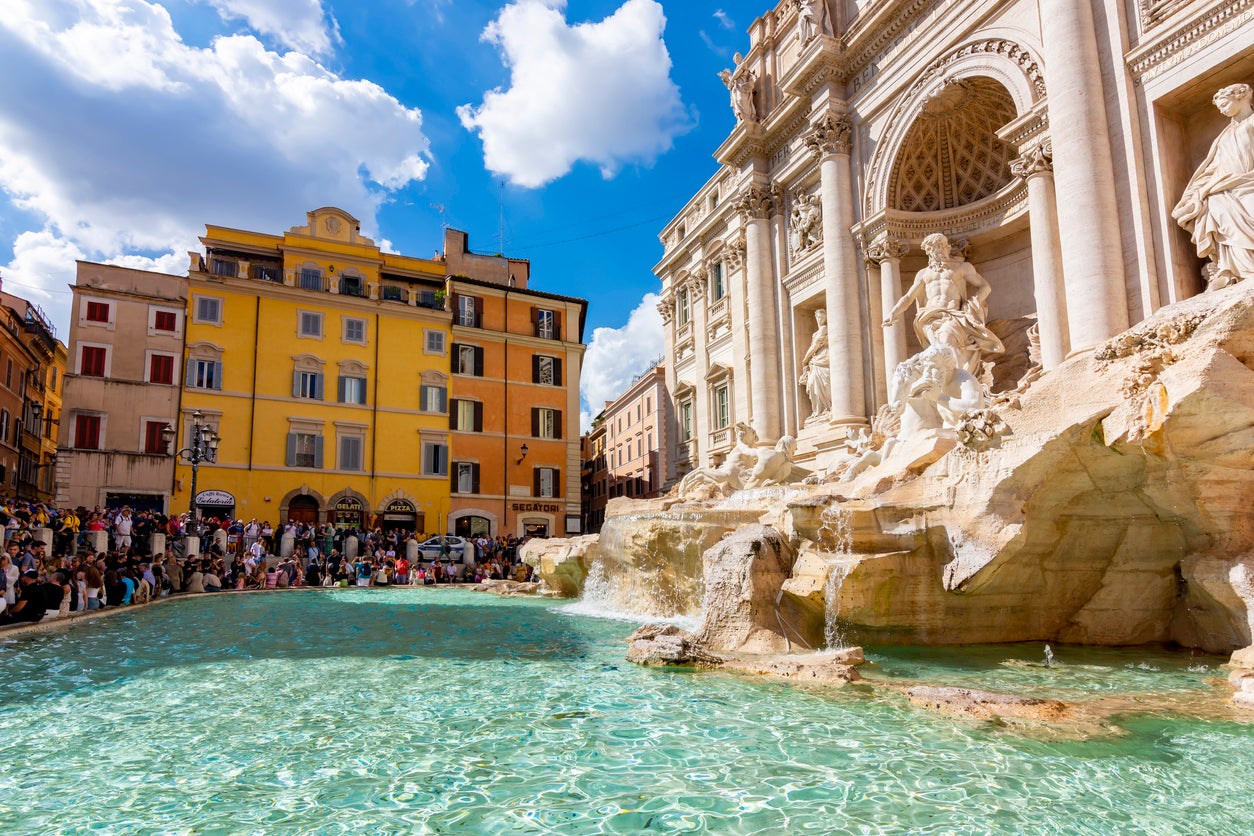
Italy’s capital, Rome , is one of the world’s great cities, the magnificent stage for a lion’s share of European history, a palimpsest where ancient, medieval, Renaissance and Baroque landmarks stand shoulder to shoulder. It is the only city that surrounds a sovereign country, Vatican City, yet alongside the grandeur of the Pantheon and St Peter’s, the Colosseum and Trevi Fountain, the Castel Sant’Angelo and Spanish Steps and 900 churches, there is a sense of fun. Hit the lively bars, lick gelato under the parasol pines, and hire a Vespa to pretend you’re in Roman Holiday .
Read more on Italy travel :
- Lerici: Italy’s under-the-radar alternative to the Cinque Terre
- The best places to cruise in Italy
- Milan city guide: Top things to do and where to stay in Italy’s northern powerhouse
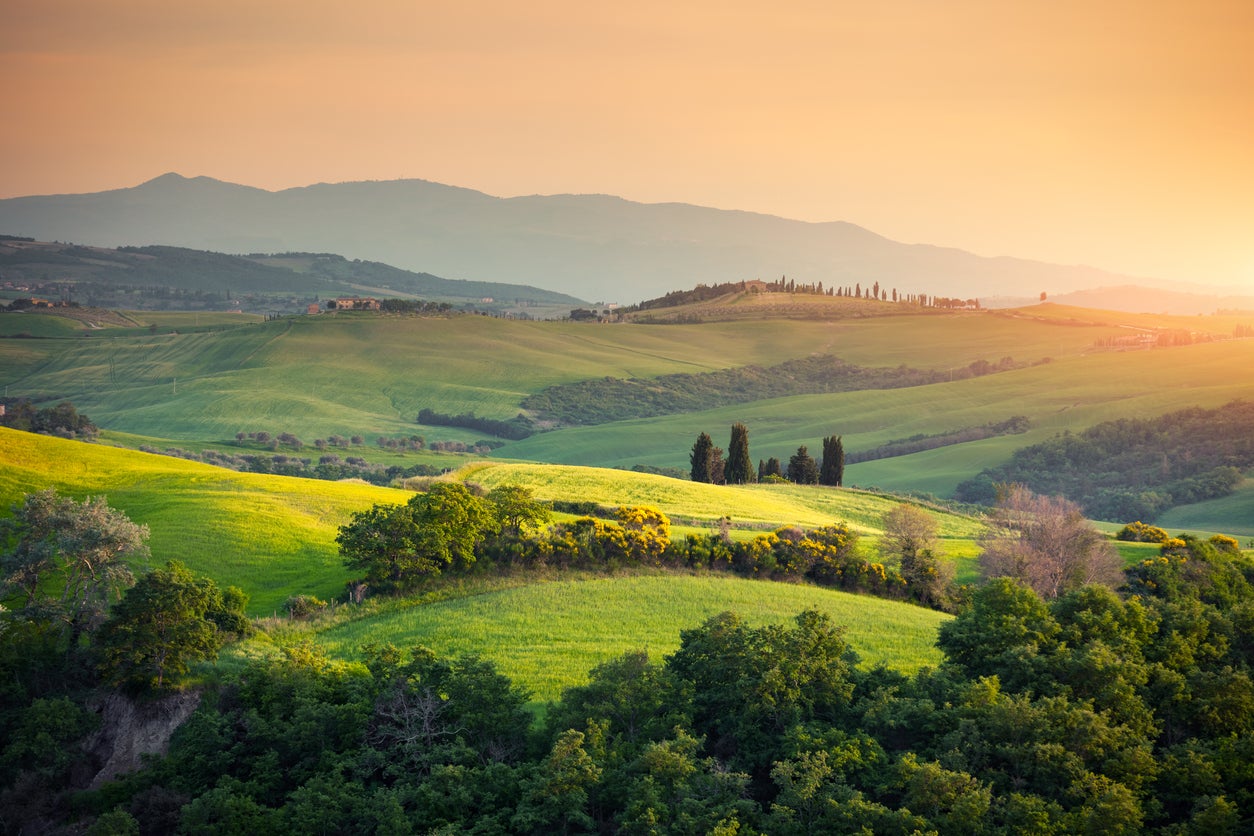
Synonymous with landscapes swathed in vines, olives and cypresses that look as if they were lifted straight from a Renaissance fresco, Tuscany is a rare region that achieved a kind of perfection by the 16th century – then had the sense to not change. Tuscany’s precocious capital is Florence , where wealthy patrons, notably the Medici, helped herald in the Renaissance and filled the city with works that changed the history of art and architecture. The smaller art cities – Siena, Pisa, Lucca, Arezzo – and hill towns are jewels, and beaches line the coast when you need a break from all that art and culture.
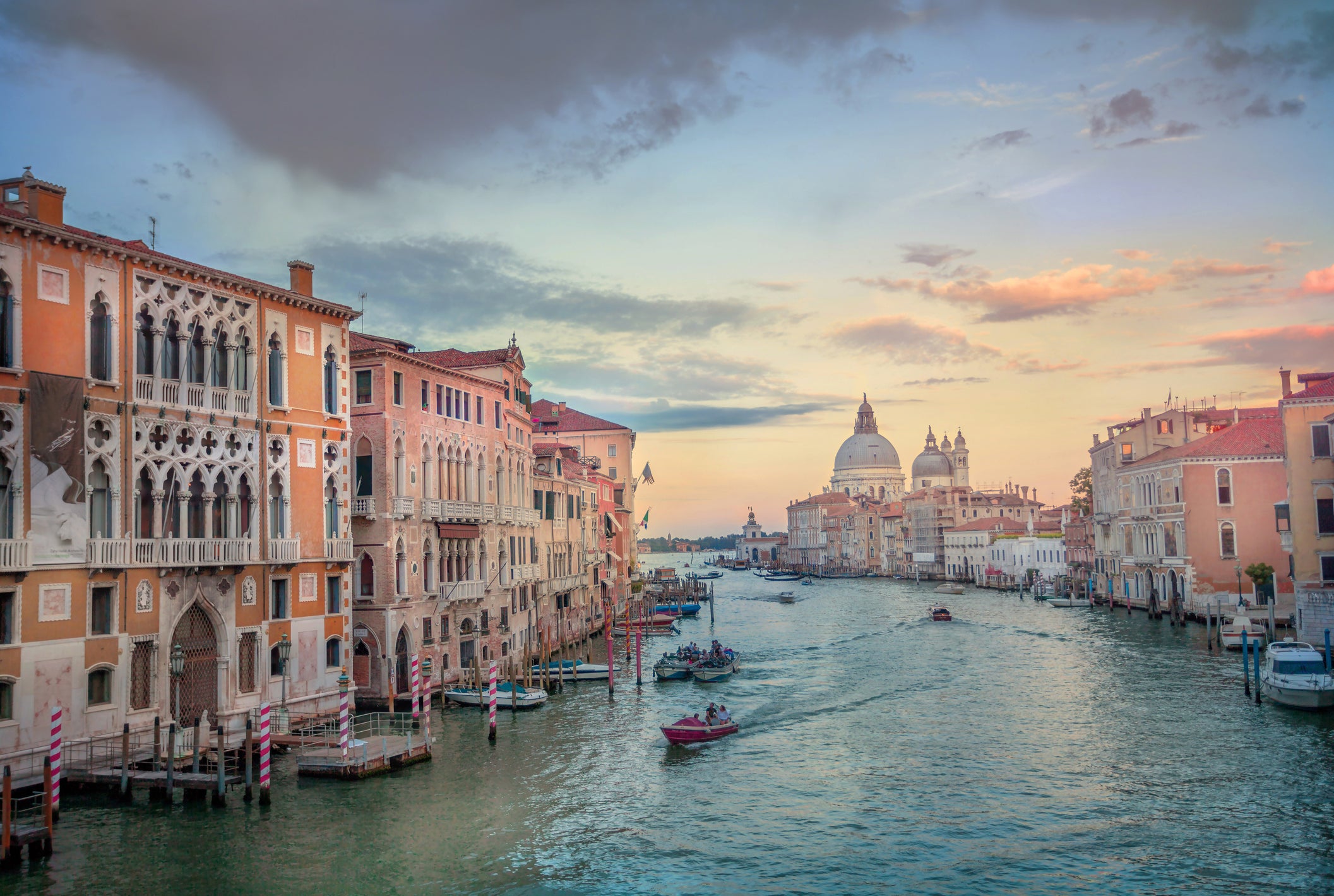
The dream city floating on water is almost too beautiful for its own good – in fact, so many want to visit that the city has started charging day-trippers admission. But La Serenissima deserves so much more than a few rushed hours. The Grand Canal, the Doge’s Palace, St Mark’s and its piazza, the Rialto bridge – all the iconic sights take on an extra magic when illuminated at night (and the day trippers have gone). Venice is exceptionally atmospheric in winter, when the mists rise, and you can have its churches and palazzi filled with masterpieces by Titian, Bellini, Tintoretto and Veronese almost to yourself.
- Best hotels in Venice
The Bay of Naples
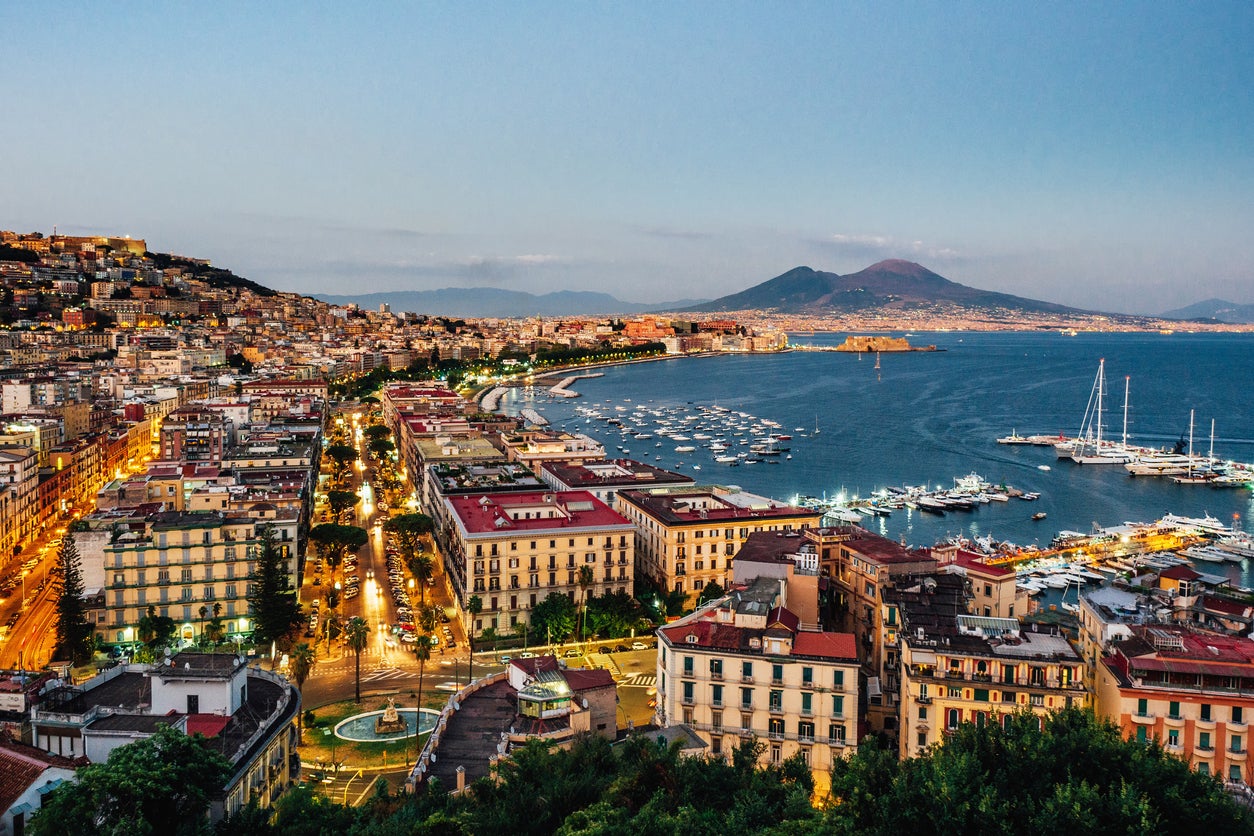
Passionate, noisy, chaotic, anarchic, fabulous Naples is the queen of the south, with its unforgettable views across the water to the still smouldering Mount Vesuvius. The volcano’s most famous victim, Pompeii, is only a short train ride away, and more fascinating than ever thanks to the recent excavations. The enormous royal Palace of Caserta with its endless gardens is just inland, while the three irresistible islands in the bay – ritzy Capri, beach-rimmed Ischia and tiny Procida – are a foretaste of the sublime, vertigo-inducing Amalfi Coast that begins just to the south.

The Mediterranean’s biggest island is a mini continent, with its own culture, dialect, cuisine and stunning relics of its ancient Greek, Roman, Byzantine, Arab, Norman and Neapolitan past. Palermo concentrates much of the art, but then there’s Agrigento with its Greek temples, romantic Taormina with its Greek theatre overlooking Mount Etna, superb Roman mosaics at Piazza Armerina, Byantine Norman ones at Monreale, and the elegant Baroque towns of Noto, Modica and Ragusa. The small islands of Sicily’s coasts are equally fascinating, notably the volcanic Aeolian islands, where Stromboli erupts every few minutes.
Best under-the radar destinations
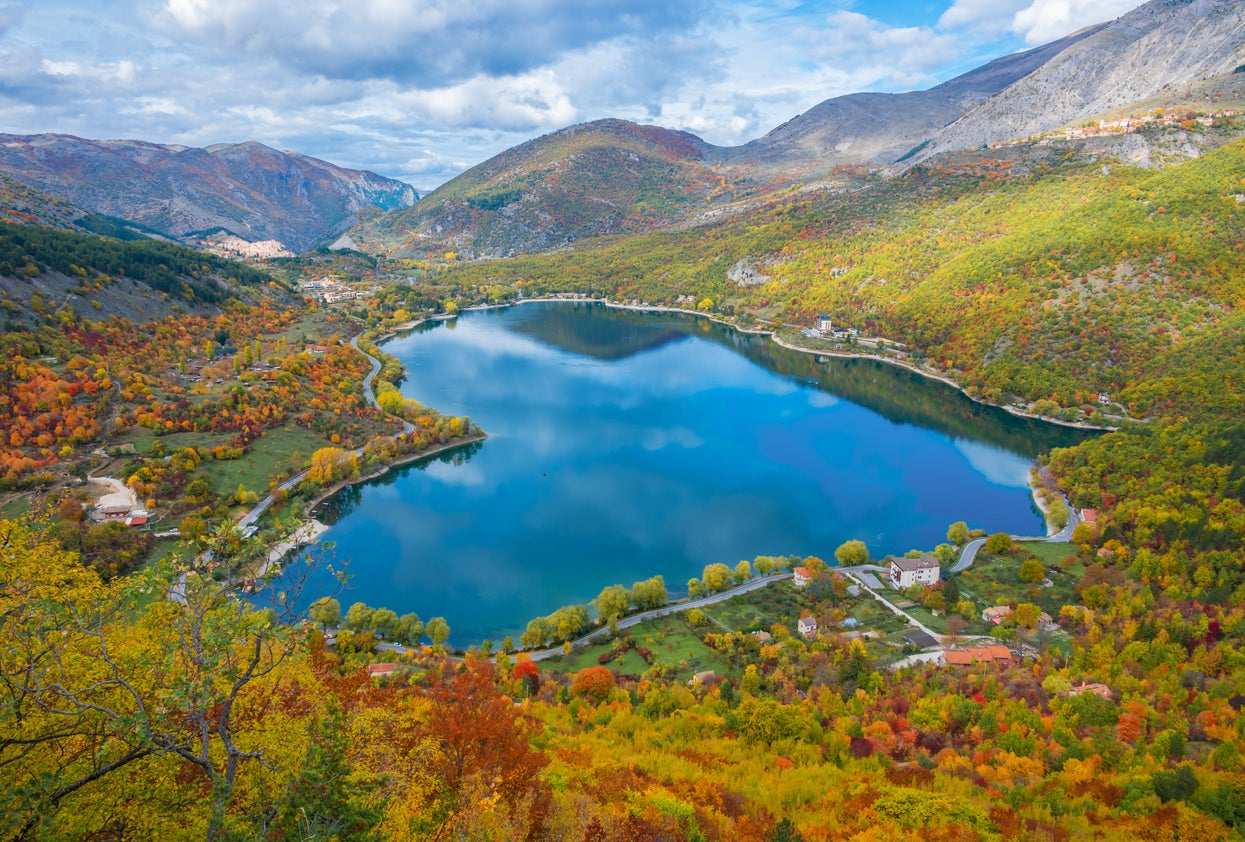
In between central and southern Italy, encompassing the highest Apennines, Abruzzo is the ‘Green Region of Europe’. More than half of its territory is protected in national parks and nature reserves, home to brown bears, wolves, golden eagles, porcupines and chamois. It’s an ideal destination for an active holiday, with its walking and cycle paths, mountain lakes, beaches, ski slopes, striking hill villages and archaeological sites.
Friuli-Venezia Giulia
This little triple-barrelled region borders Austria and Slovenia, and is only a 40-minute drive from Croatia . Its capital, Trieste, was once the chief port of the Austro-Hungarian Empire, lending it a unique Mittel European atmosphere and cuisine. There’s arty Udine, long part of the Venetian Republic, and Aquileia – one of the best preserved Roman cities – plus sandy beaches and rolling hills that produce some of Italy’s finest white wines. In the north tower the fanatical Friulian Dolomites and Julian Alps and in between, you’ll find the Tagliamento, one of the last wild rivers in Europe.
Valle d’Aosta
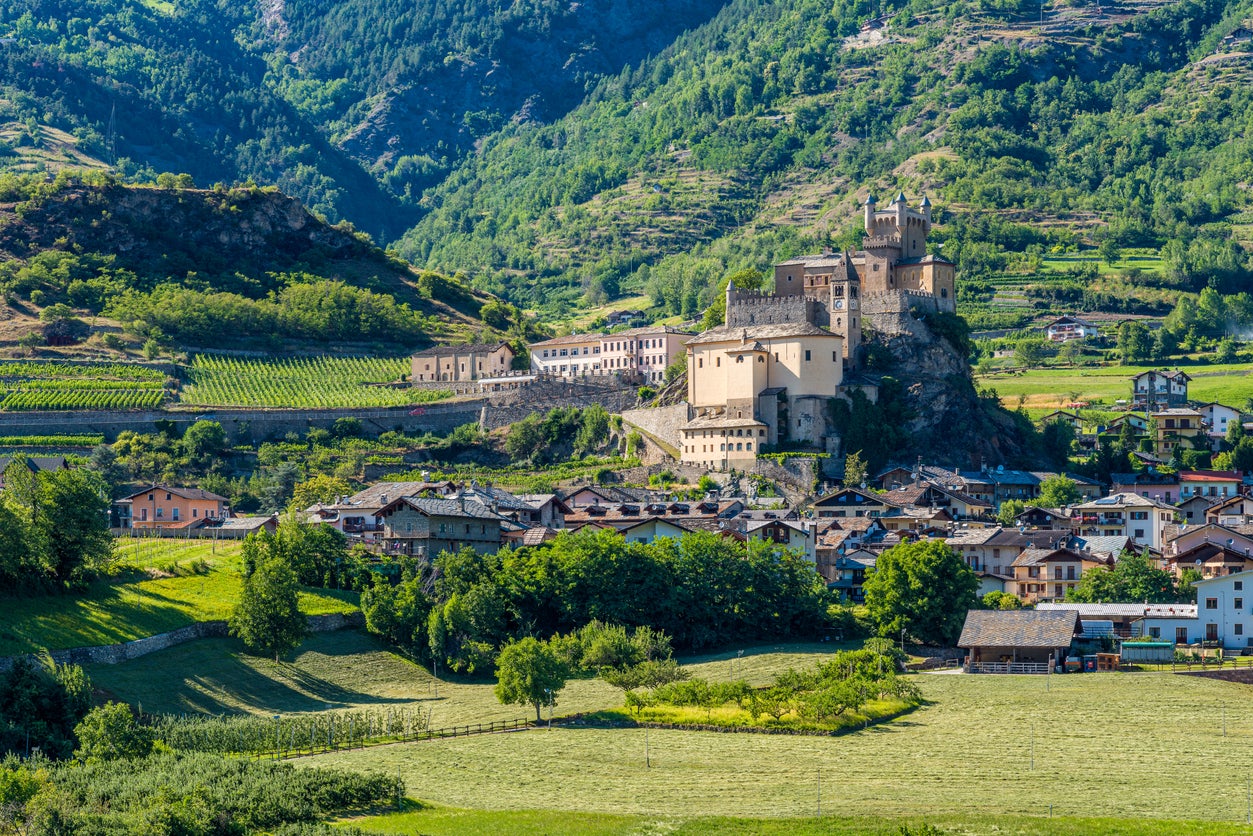
This emerald valley in Italy’s far northwest is framed by Mont Blanc and the Matterhorn and majestic Gran Paradiso National Park. Smallest and least populated of Italy’s regions, where both Italian and French are official languages, it’s dotted with castles, chalets and happy cows with huge bells who produced the valley’s famous Fontina cheese. The pretty capital, Aosta, is full of Roman-medieval charm.
The mountainous instep of the Italian boot was long unknown to most tourists, although it’s just beginning to be discovered. There are small beach resorts along the Ionian and Tyrrhenian, some beautiful villages, lovely Aglianico del Vulture wine, and the fascinating city of Matera, where people lived in caves in a river canyon into the 20th century; today it’s a Unesco World Heritage Site and stand-in for ancient Jerusalem in a number of recent films.
Best things to do
Eat in bologna.
The capital of Emilia Romagna (think prosciutto, Parmesan, tortellini, mortadella, etc), Bologna is foodie heaven. Its Quadrilateral market is a gastronomic epiphany, and will whet your appetite for a dish of tagliatelle alla Bolognese – the heavenly origin of spag bol.
Garden hop on the Italian Lakes
Few places on earth can match the gorgeous scenery, villas and gardens that grow in the singular microclimates of Italy’s enormous alpine lakes – Maggiore, Como and Garda . Regular ferries and boat services will get you there – or hire your own boat.
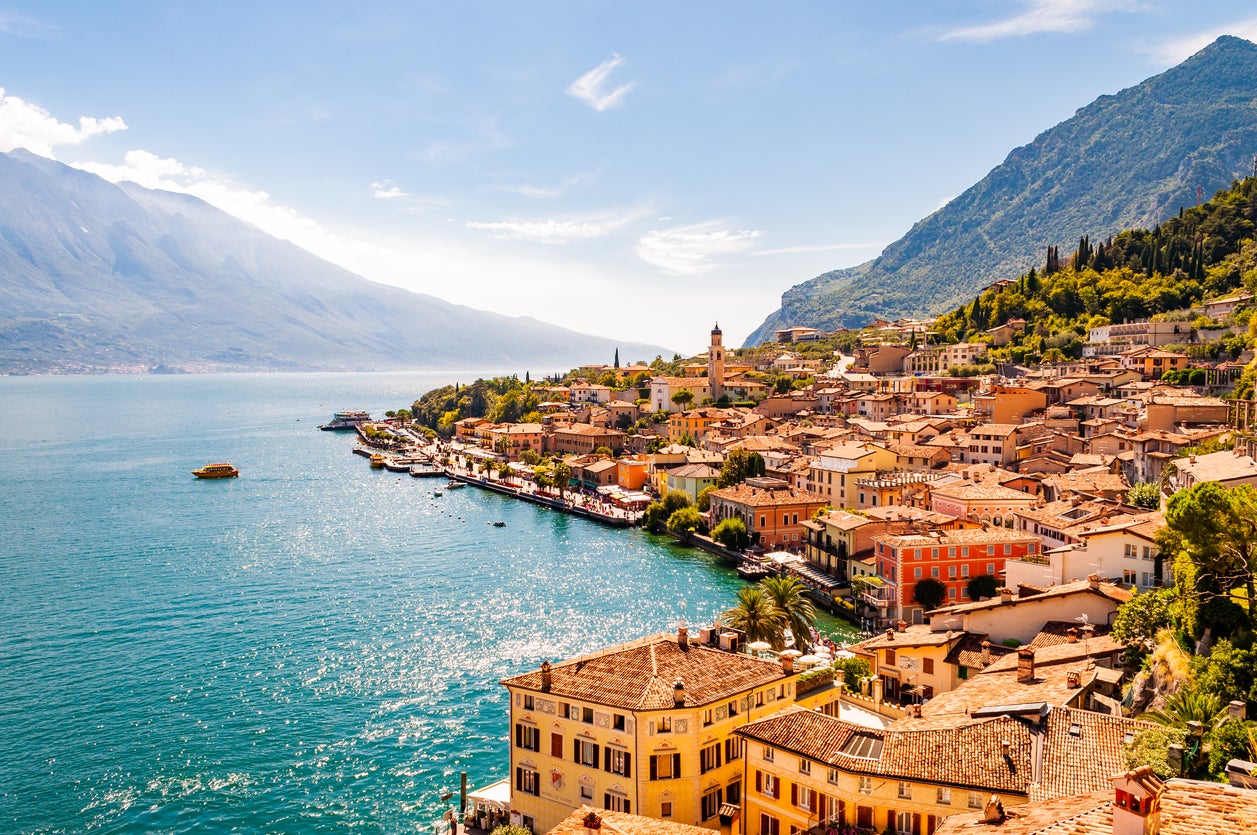
Take in an opera
Along with Italy’s cathedrals of trilling arias – Milan ’s La Scala, Venice’s La Fenice or Naples’s San Carlo – there are wonderful summer festivals in Verona’s Roman Arena, Macerata’s Sferisterio in the Marche, Rome’s Baths of Caracalla, and others dedicated to composers, like Puccini in Torre del Lago (Tuscany), Verdi (Parma), and Rossini (Pescara).
- Best hotels in Milan
Race a Ferrari
Fancy yourself a racing driver? Try your hand on a simulator at the Enzo Ferrari museum in Modena, the capital of Italy’s ‘Motor Valley’. For more Ferrari action, there are factory tours in nearby Maranello, plus the chance to visit the homes of Lamborghini, Maserati, Pagani and Ducati with their museums and factory tours.
Getting around
Italy has a superb rail network, and the high-speed service between the major cities makes taking the train cheaper, more convenient and more comfortable than flying. Frecciarossa (red arrows) trains go up to 300km/h (186 mph) between Turin, Milan, Bologna, Florence, Naples and Salerno, and between Turin, Milan, Verona and Venice. Coaches to towns and villages not on the rail lines are also excellent and usually depart from the nearest train station. In the cities, public transport (metros, trams, buses and, in Venice, boat-buses called vaporetti) are also easy to use.
Money-saving tip
If you aren’t bring the kids, you’ll save hundreds of pounds by avoiding travel during the school holidays, when flight and hotel prices soar. Some major attractions, such as the Uffizi Gallery in Florence, also charge less if you go between November to February.
What time zone is it in?
What’s the weather like.
It can get uncomfortably hot in July and August , especially in the south and Po Valley. Spring and autumn are mild (October and November are the rainiest months); winters require coats, even in Sicily.
What currency do I need?
What language is spoken.
Italian, but English is widely understood.
Read more: The best boutique hotels in Rome – where to stay in style for all budget
Join our commenting forum
Join thought-provoking conversations, follow other Independent readers and see their replies
Subscribe to Independent Premium to bookmark this article
Want to bookmark your favourite articles and stories to read or reference later? Start your Independent Premium subscription today.
New to The Independent?
Or if you would prefer:
Want an ad-free experience?
Hi {{indy.fullName}}
- My Independent Premium
- Account details
- Help centre

See Kameron Marlowe at Parx Casino
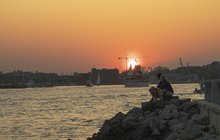
Experience Boston’s oceanside allure
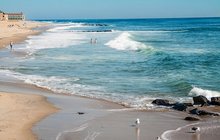
It's one summer wow after another.

Normalizing mental health discussions
- Health News
- Children's Health
Entertainment
- Food & Drink
- Restaurants
- Family-Friendly
- Performances
- Fantasy Football
- Staff / Contributors
- Legal / Privacy
© 2024 WWB Holdings, LLC. All rights reserved
- Google Plus
More Events:
June 06, 2024
- Two art festivals, Porchfest and tours of Society Hill gardens: Your weekend guide to things to do
The Odunde Festival also brings African culture to South Philly and it's the final weekend of Philly Beer Week.
Two art festivals are taking place is weekend: The Rittenhouse Square Fine Art Show runs Friday through Sunday and Art for the Cash Poor, above, returns on Saturday in Olde Kensington. Also happening this weekend are the West Philly Porchfest music festival, Odunde Fest in South Philly and it's the last weekend for Philly Beer Week.
This weekend will be a big one for patrons of the arts — whether they prefer paintings, African dance, landscaping or up-and-coming Philly music.
Not one but two festivals will be dedicated to the fine arts. In Olde Kensington, artists will sell their work at affordable price points during a one-day festival and on Rittenhouse Square, painters and sculptors will display their pieces Friday through Sunday. The Odunde Festival in South Philadelphia, meanwhile, will showcase African dance, music and wares during its signature Sunday block party.
Music is also the foundation of West Philly Porchfest, a unique concert series where local acts perform from homeowners' porches and stoops. Green thumbs can appreciate the gardens of Society Hill during special ticketed tours, and anyone can celebrate the fine art of brewing at the final Philly Beer Week events.
Catch live local bands on West Philly porches
The returning West Philly Porchfest invites musicians into the most intimate outdoor spaces: people's porches. Performers will take to the unique stages in homes throughout Spruce Hill, Cedar Park, Walnut Hill and Squirrel Hill on Saturday between 12-6 p.m. With roughly 200 porches (and even more musical acts) participating, it'll be hard to wander West Philly without picking up a tune.
Shop affordable art in Olde Kensington
Love art, but can't afford a Jackson Pollock (or even a knock-off Jackie Potluck)? A Saturday festival will offer original pieces from over 100 artists for $250 or less. Art for the Cash Poor will line the 1400 and 1500 blocks of North American Street between 12-6 p.m. The showcase is also an opportunity to support local artists, who keep 100% of the profits.
Attend the largest African American street fest in the U.S.
Join the long-running Odunde Festival in South Philadelphia as the celebration of African (and African American) culture turns 49. The main event is the Sunday block party, where dancers, drummers and headliner Dru Hill will perform from stages on South Street and Grays Ferry Avenue. The festivities start at 10 a.m.
Check out pieces by art therapy patients
All weekend long, Rittenhouse Square will display paintings, prints and sculptures in the open air. The Rittenhouse Square Fine Art Show returns to the park with works from 145 artists, including some local students. (The whole thing was started in 1928 by student artists, who hung their work in the park from clotheslines.) This year's exhibition includes originals from patients in the art therapy program at Jefferson Moss-Magee Rehabilitation hospitals.
Tour private gardens in Society Hill
Take a (legal) peek inside someone's backyard during two days of garden tours in Society Hill. The ticketed, self-guided event invites you into the outdoor spaces of 18 homes in the historic neighborhood, which supposedly boasts the largest concentration of buildings from the 1700s and early 1800s in the United States. Tours will run Saturday and Sunday from 1-4 p.m.
Close out Philly Beer Week at a lawn party or yappy hour
Philly Beer Week may be shutting down Sunday, but it's still got plenty of parties on the books before then. The roster includes an emo music night at Fat Lady Brewing, a "lawn jawn" at American Sardine Bar, a pinewood derby at Good Dog Bar and a "yappy hour" at Love City Brewing benefitting Morris Animal Refuge — and featuring at least one adoptable pup.
Follow Kristin & PhillyVoice on Twitter: @kristin_hunt | @thePhillyVoice Like us on Facebook: PhillyVoice Have a news tip ? Let us know.

Kristin Hunt PhillyVoice Staff
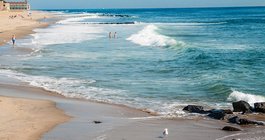
Wow To-Dos in Jersey: Summer sunnin' and funnin' starts here

Wells Fargo Center recognized as one of 'Best Venues 2024' by 'Front Office Sports'
Just in.
- City Council backs low-income real estate tax relief, Mayor Cherelle Parker's budget
- Report: Eagles' Dom DiSandro gains new title in organization in addition to current duties
- Pa. state trooper cleared of animal cruelty charges for hitting runaway horse with patrol car
- Motorcyclist sentenced to 1-4 years in prison for smashing woman's windshield and assaulting her near City Hall
- Former Author Events team of Philly's Free Library speaks out after unexpected firing
Must Read
Uarts students, faculty scramble to find a path forward.

Journey through Ireland's unique regions
Mental Health
FDA advisory panel votes against MDMA for treatment of PTSD
Food & Drink
Attic Brewing teams up with same-name breweries for beer release

Checking in on former Sixers participating in the NBA Finals

Manayunk's Main Street is again hosting weekly block parties this summer
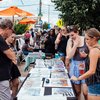
- There's no Fountain of Youth, but there are ways to slow the aging process
- People who live near Limerick power plant can get free potassium iodide tablets on June 12
- Tattoos tied to increased risk of lymphatic cancer, study finds
- Exposing infants to peanuts makes them less likely to have allergy in adolescence, study shows
- Alcohol use disorder can be treated with an array of medications – but few people have heard of them
- Binge drinking is a growing public health crisis − here's how research on alcohol use disorder has shifted
The Manayunk Arts Festival celebrates 35 years
4 ways to reinvest in your small business’ future
Ireland's rich blend of history, culture, and natural wonders awaits both returning visitors and first-timers
Your guide to a day of family fun at Bushkill Falls
How mental health and oral health are connected

IMAGES
VIDEO
COMMENTS
Art Smart Travels plans and leads private art tours through a broad range of locations in the United States and Europe. Our elite, personalized travel programs cater to your specific interests and needs so that you spend your time with personally satisfying treasures that will mean the most to you. Our travel advisory services include:
Tours, Guides, and Maps. Explore the National Gallery's collection, exhibitions, and Sculpture Garden with audio tours, stories, and more. ... Free tours at the National Gallery of Art complement and enhance classroom learning. During interactive tours, your students will look carefully at original works of art, ask questions, and develop their ...
MetTours. Explore the vast world of art and culture through the lens of various viewpoints in programs ranging from gallery tours to storytelling sessions and interactive experiences with works of art. MetTours connects you with works of art, with curators, conservators, educators, and artists alike guiding you through the collection and ...
Day 2: Rome Sightseeing. This morning, visit the Vatican Museum with a Local Expert. Admire the papal art collection and enter the Sistine Chapel and admire Michelangelo's masterpiece on its ceiling. Next door, in St Peter's Basilica, see one of Michelangelo's early works, the Pieta, and the splendid dome, completed after his death.
Hours: Thursday-Tuesday: 10 am-5 pm. Closed: Wednesday. Closed Thanksgiving Day, December 25, and January 1. Visitor Guidelines. Review our visitor guidelines to get the most out of your Met experience. Directions and Parking. Plan your route to the Museum. Museum Map.
Art & culture tours. Whether you're learning about glassblowing in Venice or sipping mint tea on the ground of a Bedouin tent, you're bound to have a life-changing experience with us. ... Our tour guides, bus drivers and accommodations were outstanding. I would definitely recommend this trip for the under 70 age group, as it requires ...
We'll customize your tour from there. Your confirmation will show where the guide will meet you at the museum. Private tours for 1 - 4 people in your group booked online* are $225 per hour (a $5 discount over tours booked via email or phone). All tours have a two-hour minimum. Additional people and/or additional time have an additional fee.
Guided tours. Professional art historians are available to provide guided Museum tours of masterworks in MoMA's collection, the Museum's architecture, and current exhibitions. Tours can be customized to focus on specific galleries, mediums, or collection areas, and are available in multiple languages. Tours during Museum hours. Schedule a tour with a MoMA guide. Tour rates Adults: $50 ...
Information for your visit to the National Gallery of Art, including directions, dining options, and visitor guides. Admission to the National Gallery of Art is always free. ... Explore our collection, exhibitions, and programs with audio tours, guides, and more. See all. Maps and Floor Plans. Find your way around with maps available in nine ...
Kids West Building Tour: Featured Selections. Join us as we get up close and personal with some of the world's greatest paintings. Move at your own pace and choose from a works by such masters as Leonardo da Vinci, Rembrandt van Rijn, Peter Paul Rubens, Edgar Degas, Claude Monet, and Winslow Homer. Listen Now.
Join us for a journey, highlighting both celebrated and obscure masterpieces. Our art tours stand out by offering more art, more art history, and more anecdotes, unlike the typical art tours that only give less than 50 masterpieces. Expect an experience akin to visiting an art and cultural museum, complete with a knowledgeable guide to lead the ...
Full description. With no less than 2 million works of art and artifacts on hand, the Met showcases objects from Ancient Greece and Egypt as well as modern art from Europe and beyond. Your local English speaking guide will be an expert on the museum who will share a mix of historical information, scandalous stories and surprising details with ...
Full description. Experience a guided tour around some of the world's greatest and most iconic art pieces at the Art Institute of Chicago. Avoid the crowds and lines and meet your expert guide at the Institute 30 minutes before opening time. Explore the expansive collection, learning more about both contemporary and classic pieces.
Her tours are immersive journeys through time, art, and culture, curated by a guide who wears her Roman heritage with pride. Embark on an adventure with Flaminia, where her love for art, coupled with a deep connection to her Roman roots, transforms every tour into an unforgettable exploration of culture, heritage, and the timeless allure of the ...
Visit Khabarovsk Museum of Local Lore to get a better glimpse of city and regional life. Children and adults alike will want to visit Fishes of Amur River Museum, an aquarium which is home to some 90 species of the underwater world. To catch the vibe of local artists, head to the Far Eastern Art Museum.
Public Art & Architecture tours are free of charge and run at the following times: Mondays at 2:00 pm Tuesdays at 2:00 pm Thursdays at 6:00 pm Fridays at 11:00 am Saturdays at 11:00 am. Tours last approximately one hour and start in the McKim Building Vestibule, just through the Dartmouth Street entrance. Tours are subject to guide availability.
2. Get down to City Beach. Just below the cathedral, on the River Promenade, the city beach is popular among the locals of the city. Being part of the riverfront, the beach is not really part of a real coast, but it is a very fun place to enjoy the sun and the nice weather of Khabarovsk.
He has been Recommended by the New York Times Travel Section, National Geographic Adventure Magazine, National Geographic Travel Magazine, Fodors Travel Guide, Frommers Travel Guide and 1,000 Things to See before You Die. He has also been listed #3 in the Arizona Highways for the top 25 weekend getaways for 2009. Full Day Tour
Opt outside and immerse yourself in larger-than-life sculpture parks throughout New York State. No matter the season, stunning natural landscapes set the scene as you marvel at one-of-a-kind masterpieces. In the Hudson Valley you'll find Art Omi, Storm King Art Center, and Opus 40. Art Omi is open year-round for strolling and bicycling across ...
Our art guides are chosen for their passion, personality, and charm as well as for the depth and breadth of their art knowledge. Unlike most of our competitors, our guides are not docents, artists, or actors working from a script. Each and every one is a professional art historian and trained in the ART SMART style; As such, we keep the tours ...
Muravyov Amursky Park. 4.5 /5 (3 reviews) Explore the great outdoors at Muravyov Amursky Park, a lovely green space in Khabarovsk. Experience the area's theater scene and museums.
A guide to Valletta, the Maltese capital with an eye for art and entertainment. In Malta's harbour-framed capital, a rich and evolving art scene unfolds among honeyed baroque facades, echoing ...
7:30 p.m. Devour tacos and a spicy slice. Head to Bushwick for a food crawl through the traditionally Latino, rapidly gentrifying neighborhood. Start at Taqueria Al Pastor, a casual favorite for ...
Khabarovsk ice festival. Khabarovsk or Chabarovsk ( Russian: Хаба́ровск, khah-BAH-ruhvsk) is a city on the Amur river in the Russian Far East, near the Chinese border. Often overlooked due to its proximity to Vladivostok, Khabarovsk could easily be a highlight in the long line of predominately dull cities along the Trans-Siberian Railway.
Get Your Guide - Get Your Guide is a huge online marketplace for tours and excursions. They have tons of tour options available in cities all around the world, including everything from cooking classes, walking tours, street art lessons, and more! The Man in Seat 61 - This website is the ultimate guide to train travel anywhere in the world ...
Italy travel guide: Everything you need to know before you go. The 'boot' is as much loved for its cuisine as it is for its ancient sights, romantic, art-filled cities, rural landscapes and ...
Brady Street Lunch Tour: Historic and cultural information about the neighborhood is intermingled with stops for pizza, cannoli, tacos, salami, prosciutto, olives, empanada and a Milwaukee-brewed ...
June 06, 2024 Two art festivals, Porchfest and tours of Society Hill gardens: Your weekend guide to things to do The Odunde Festival also brings African culture to South Philly and it's the final ...